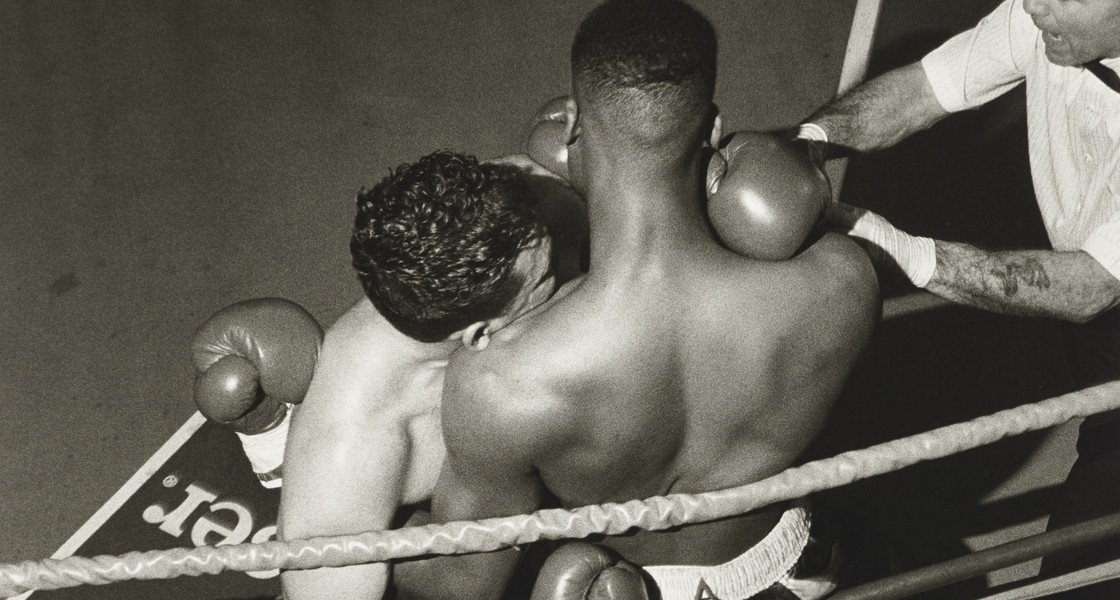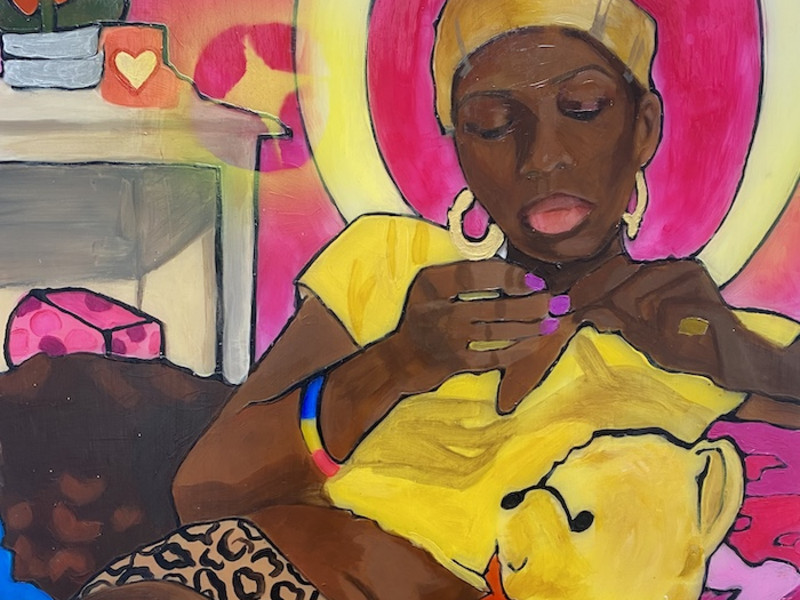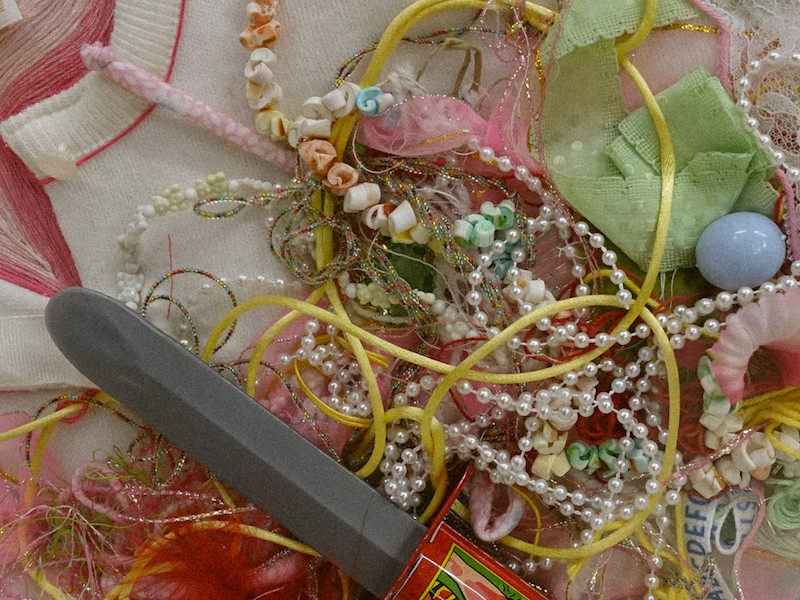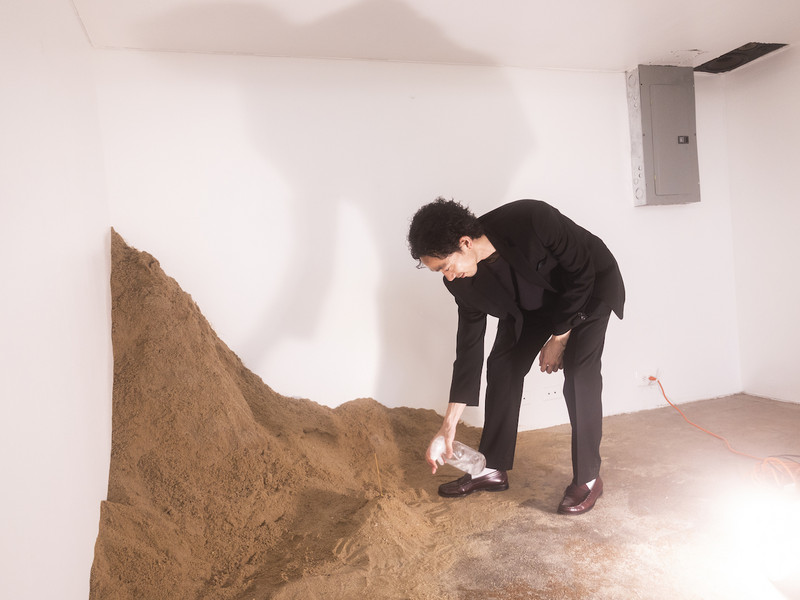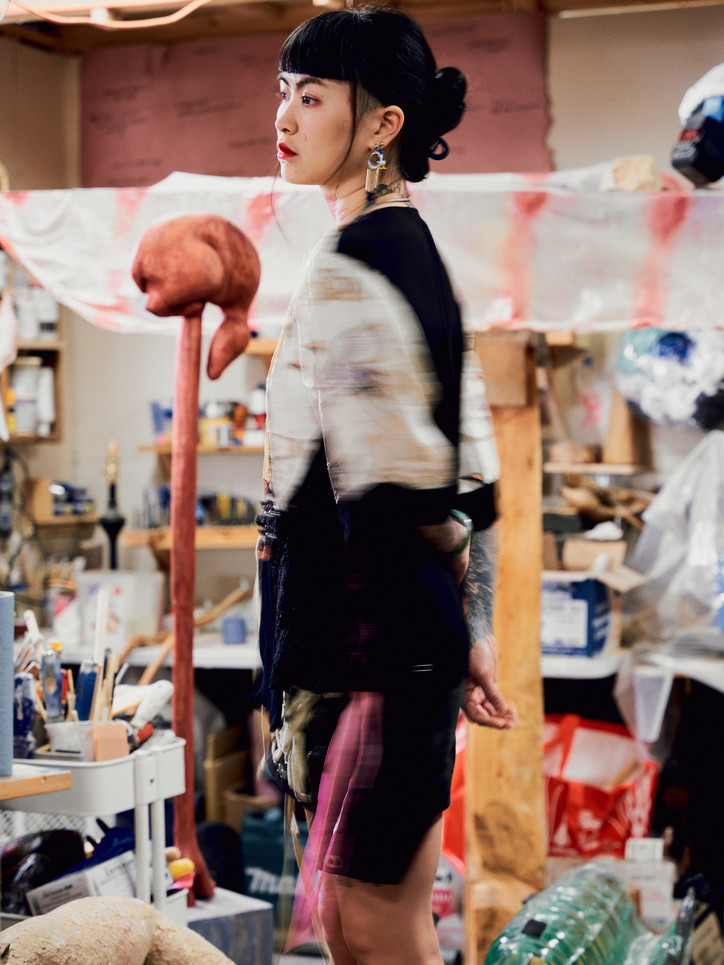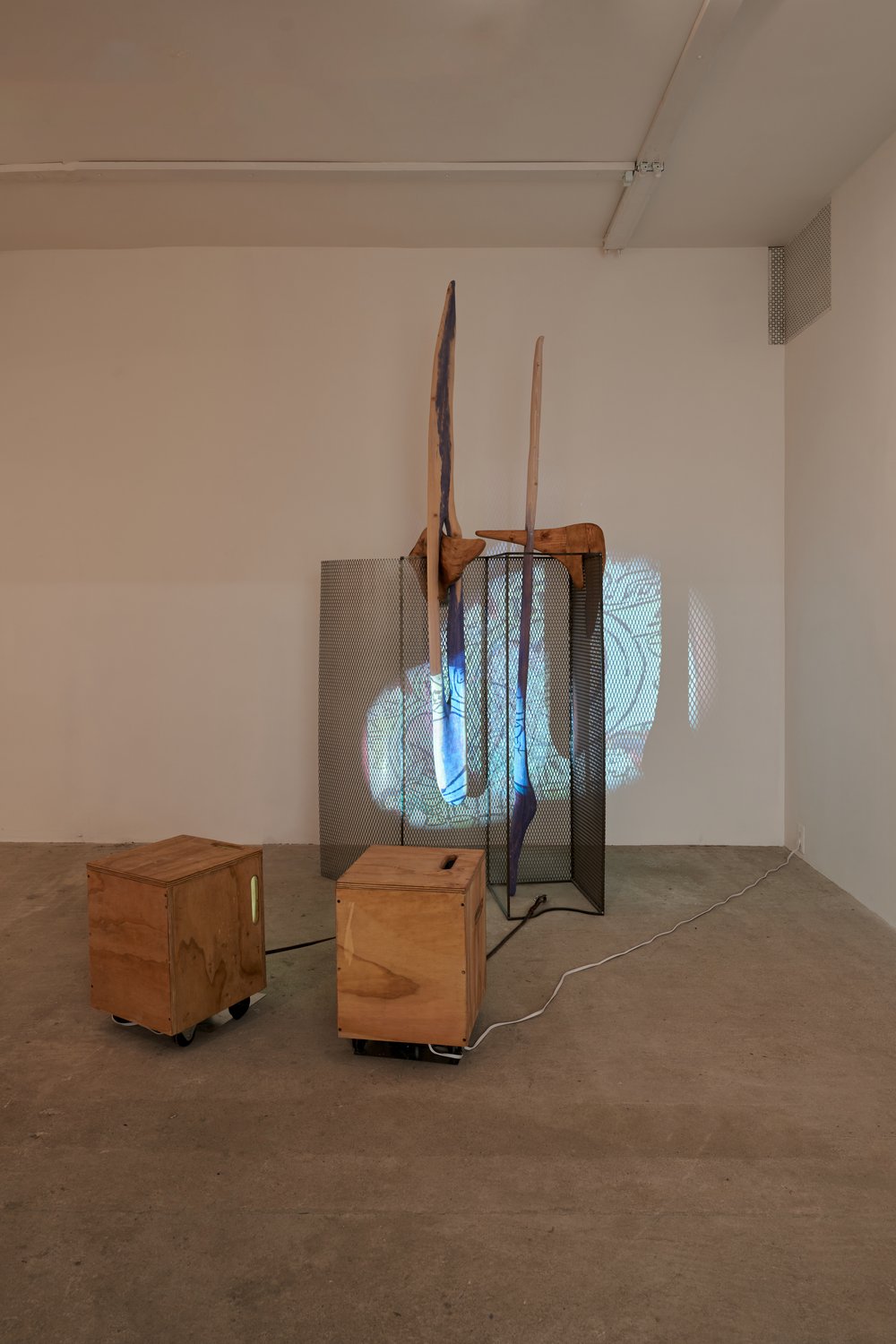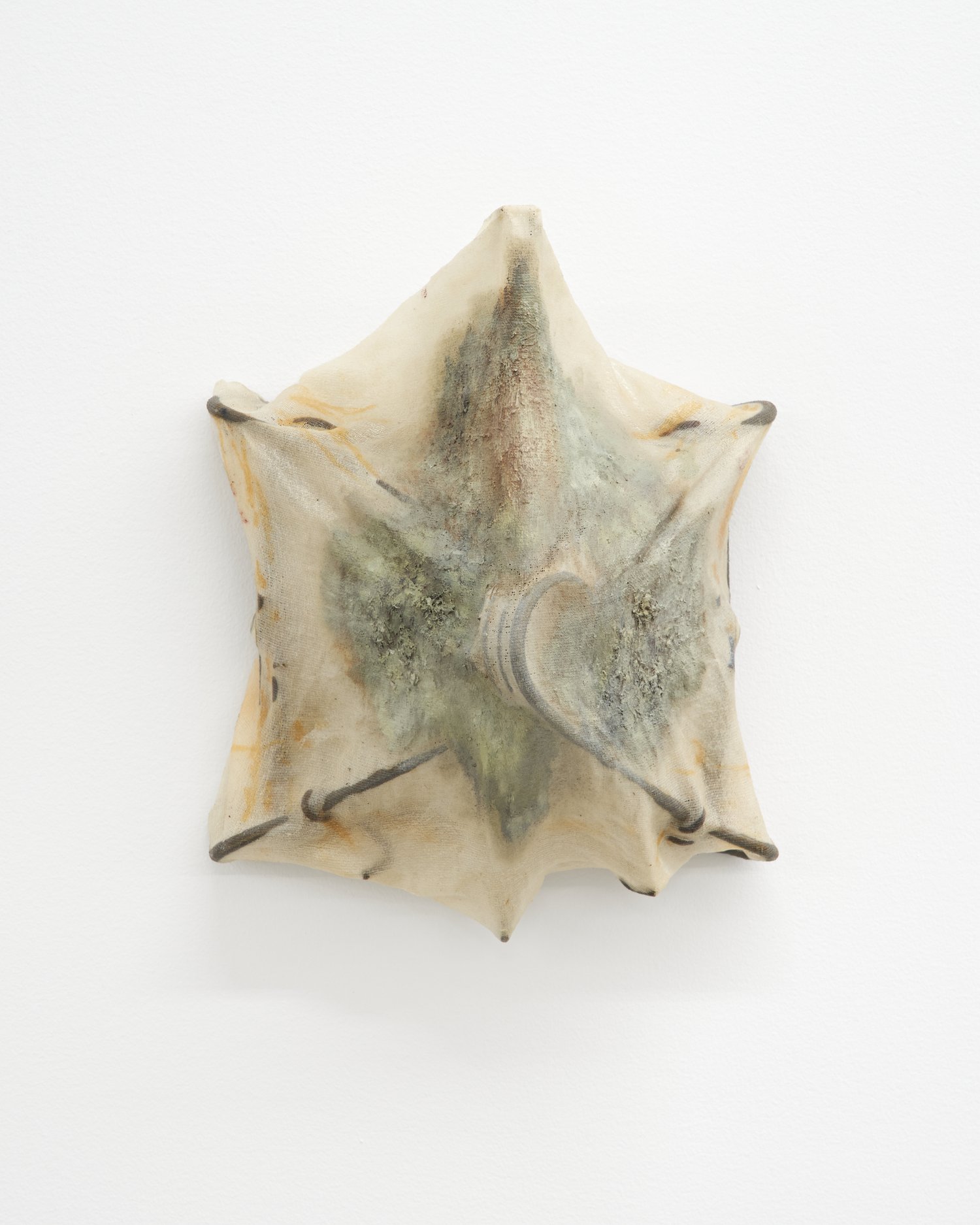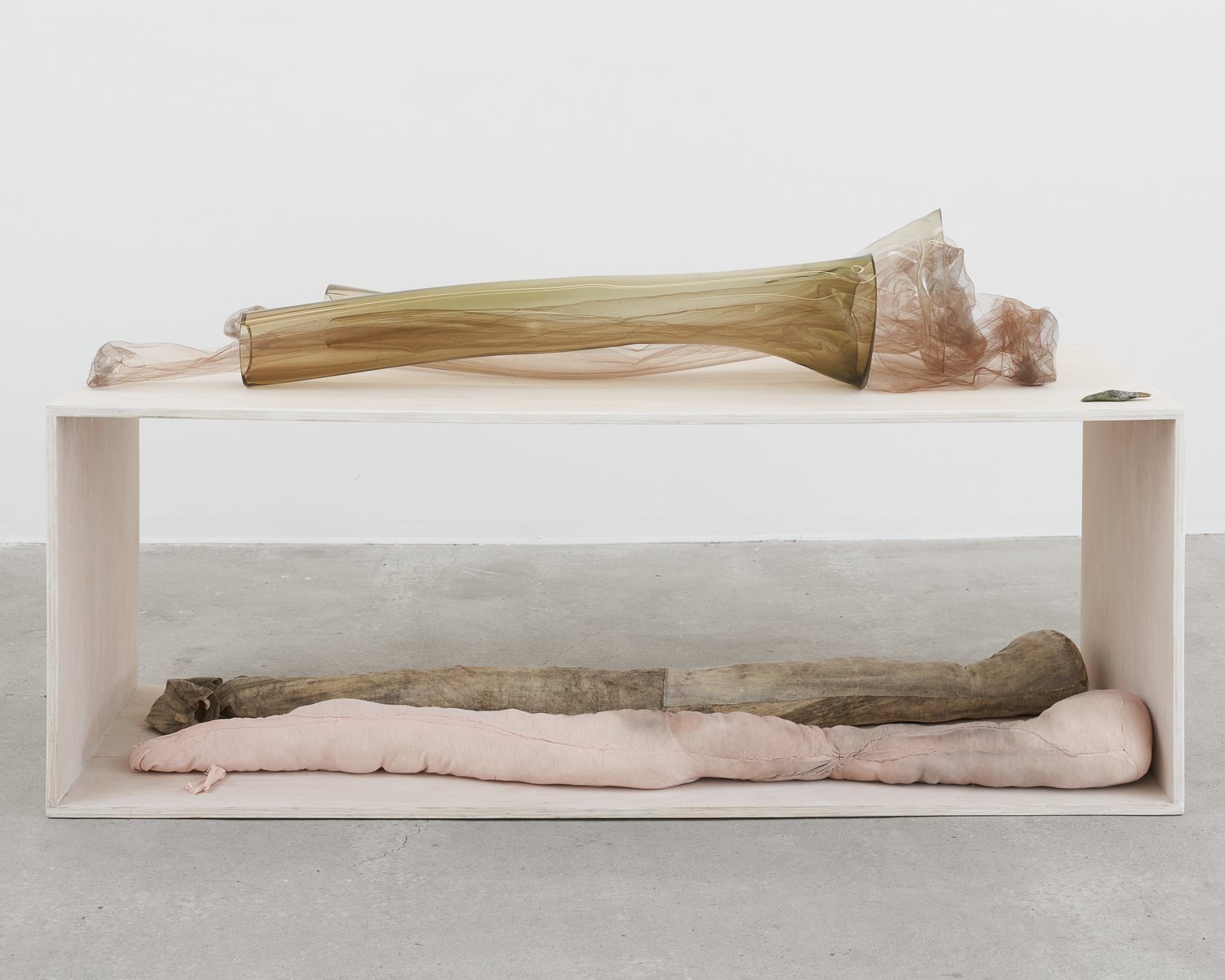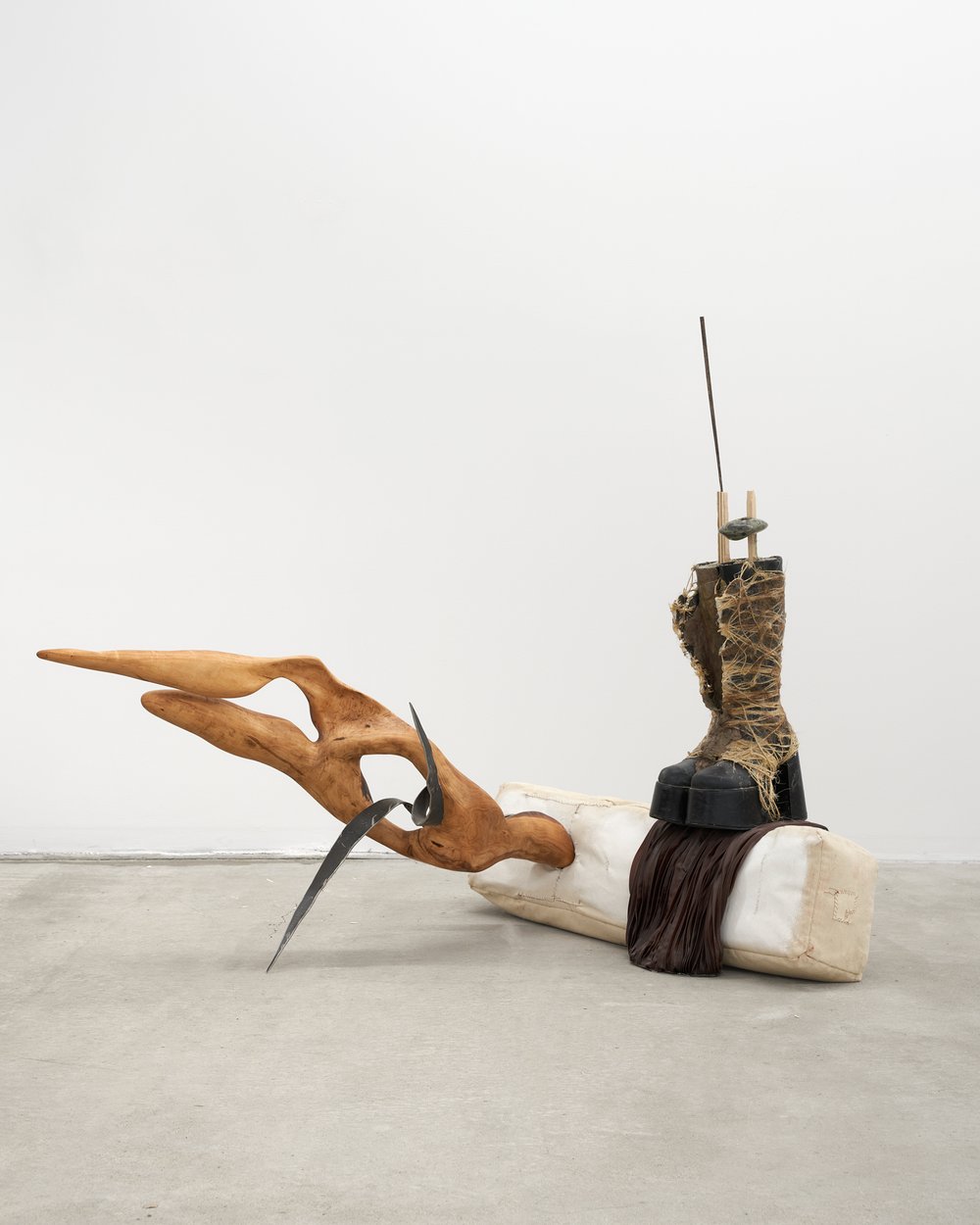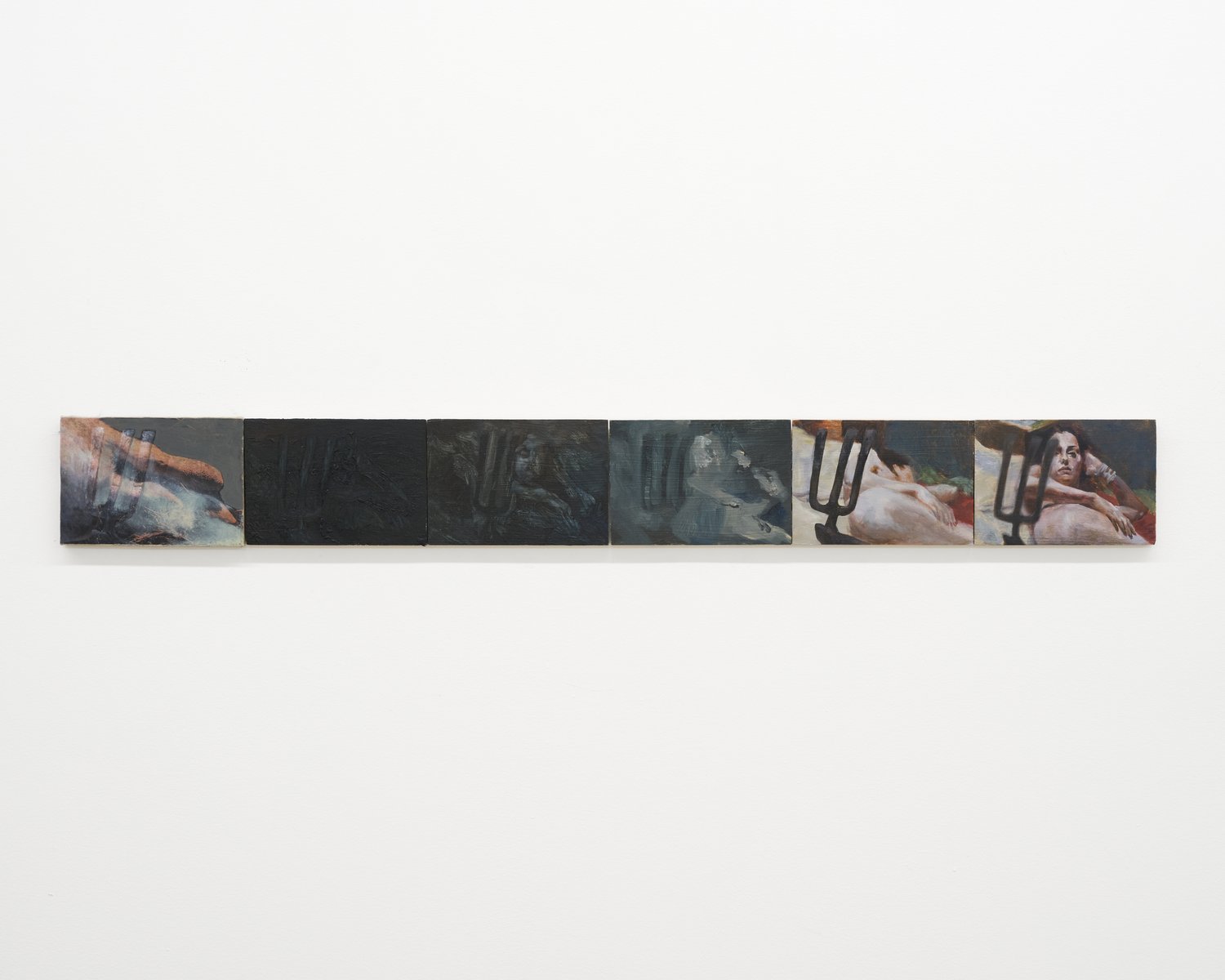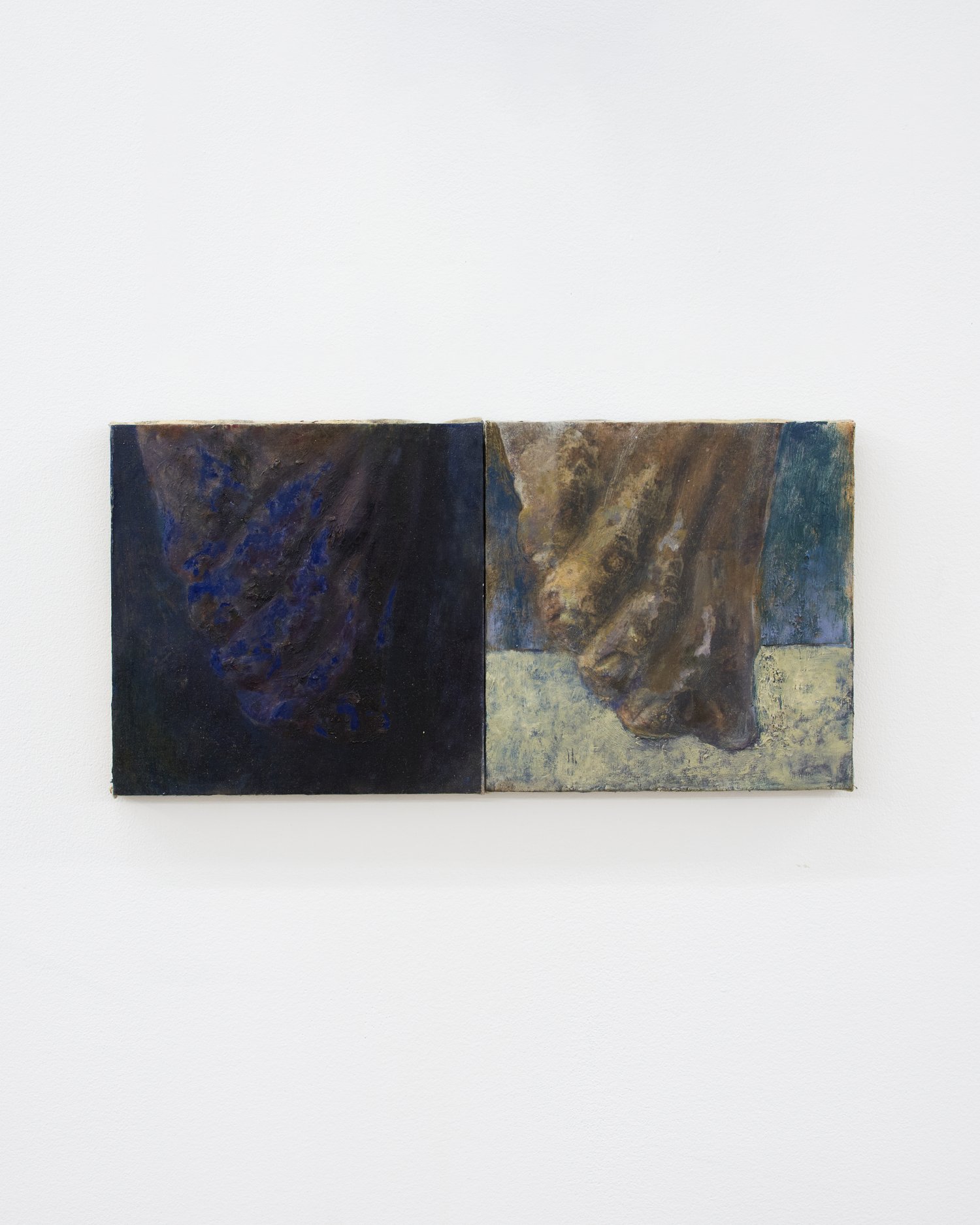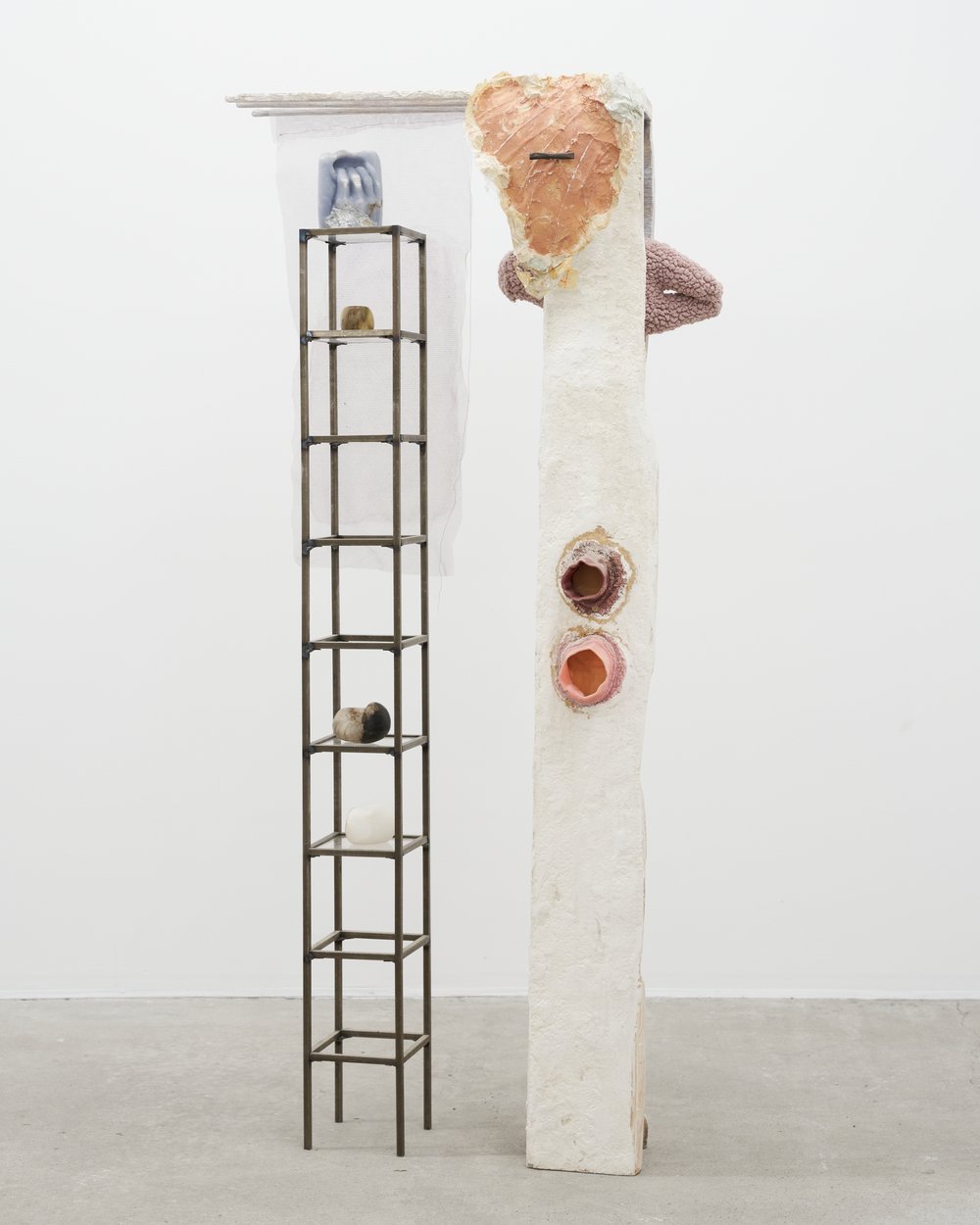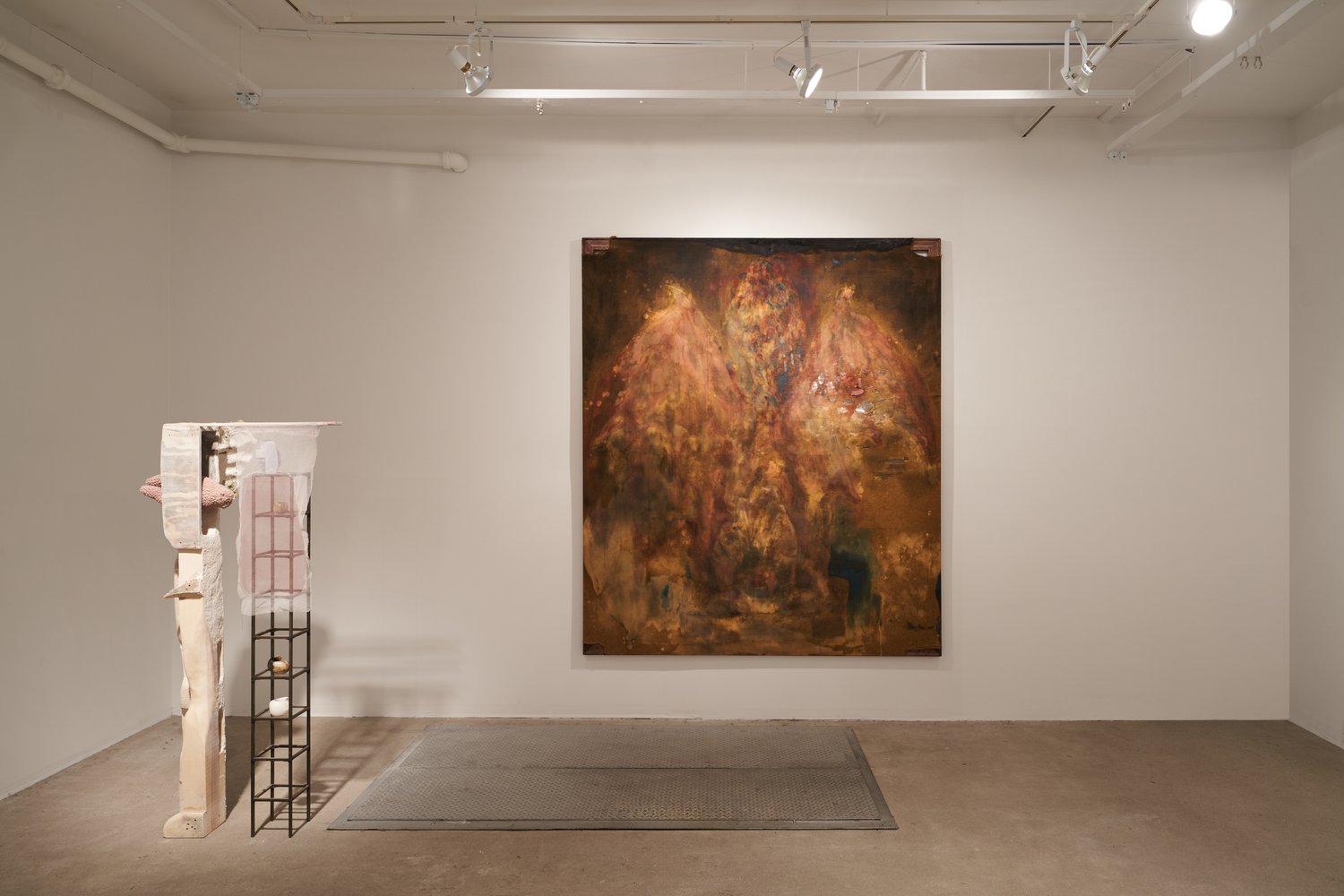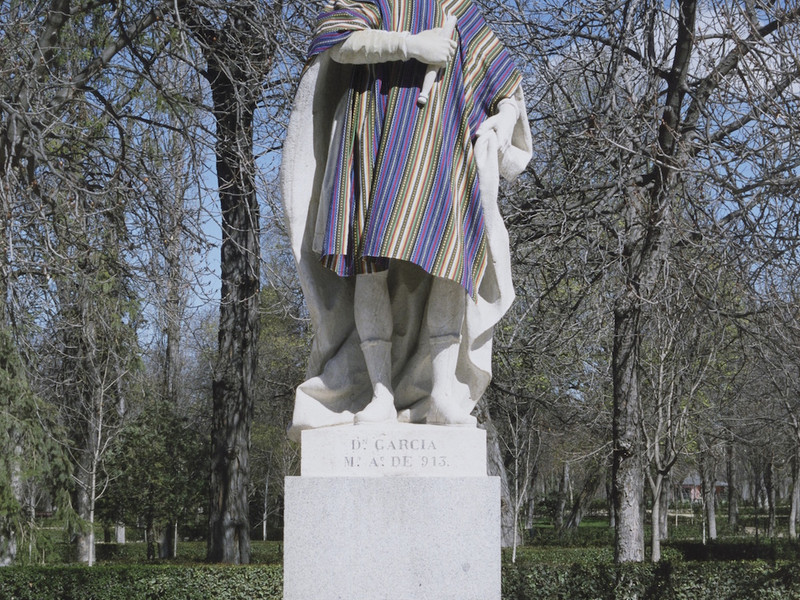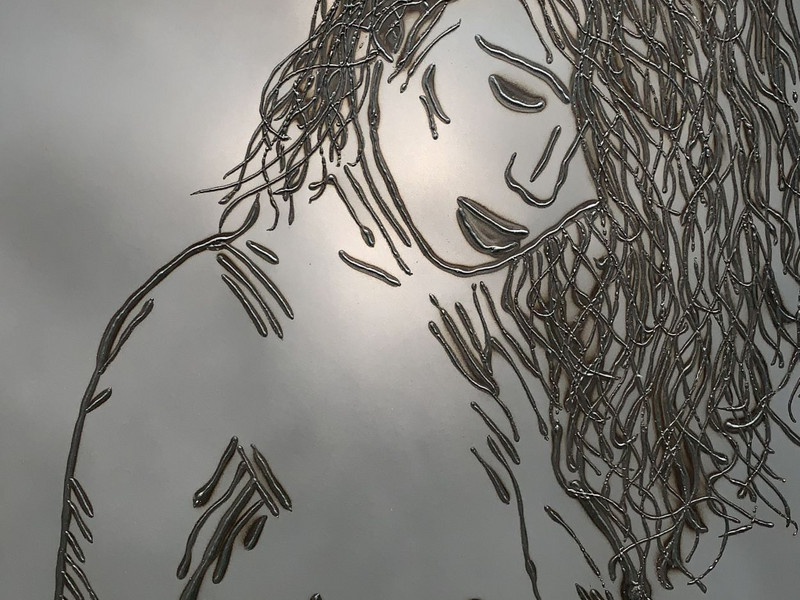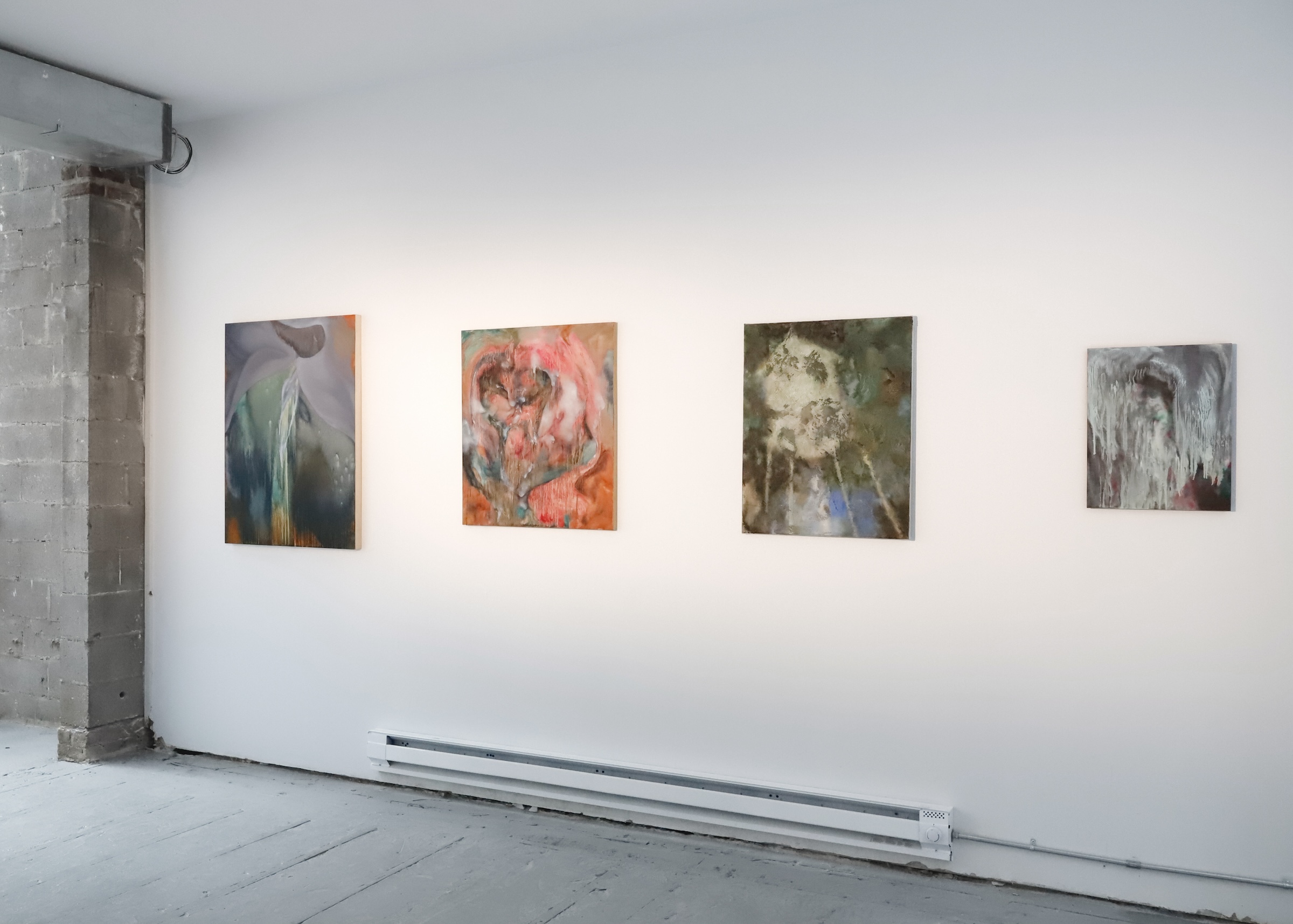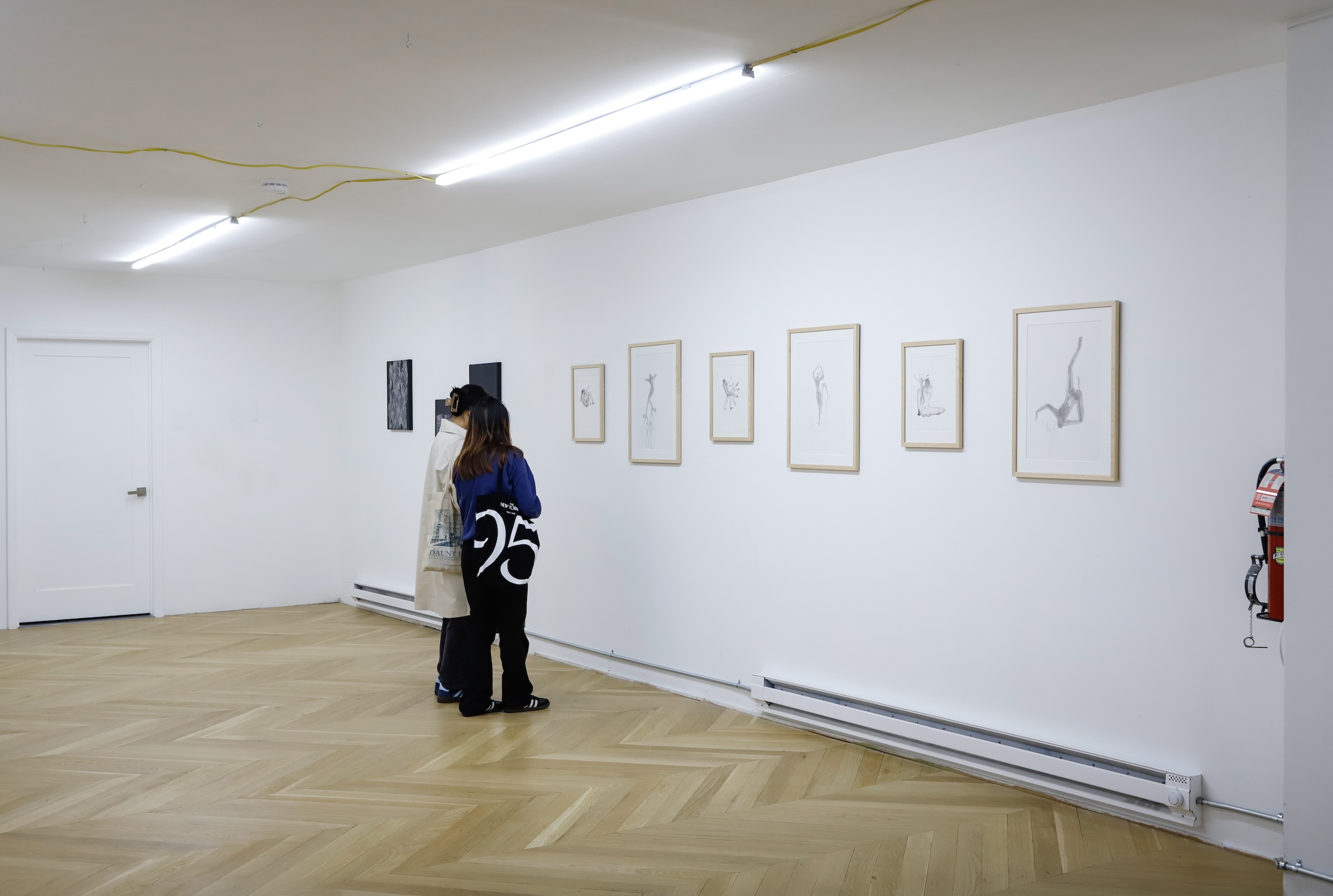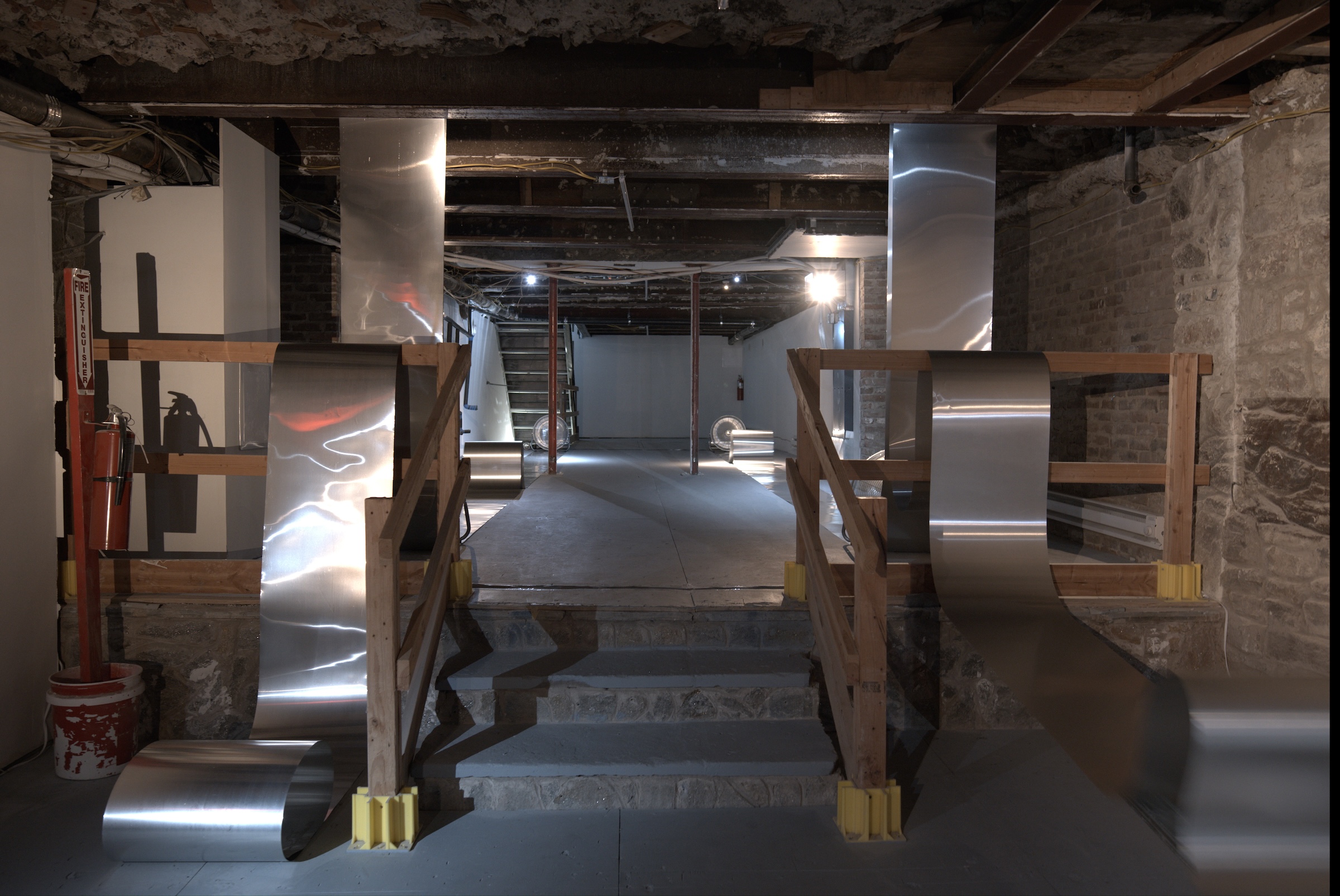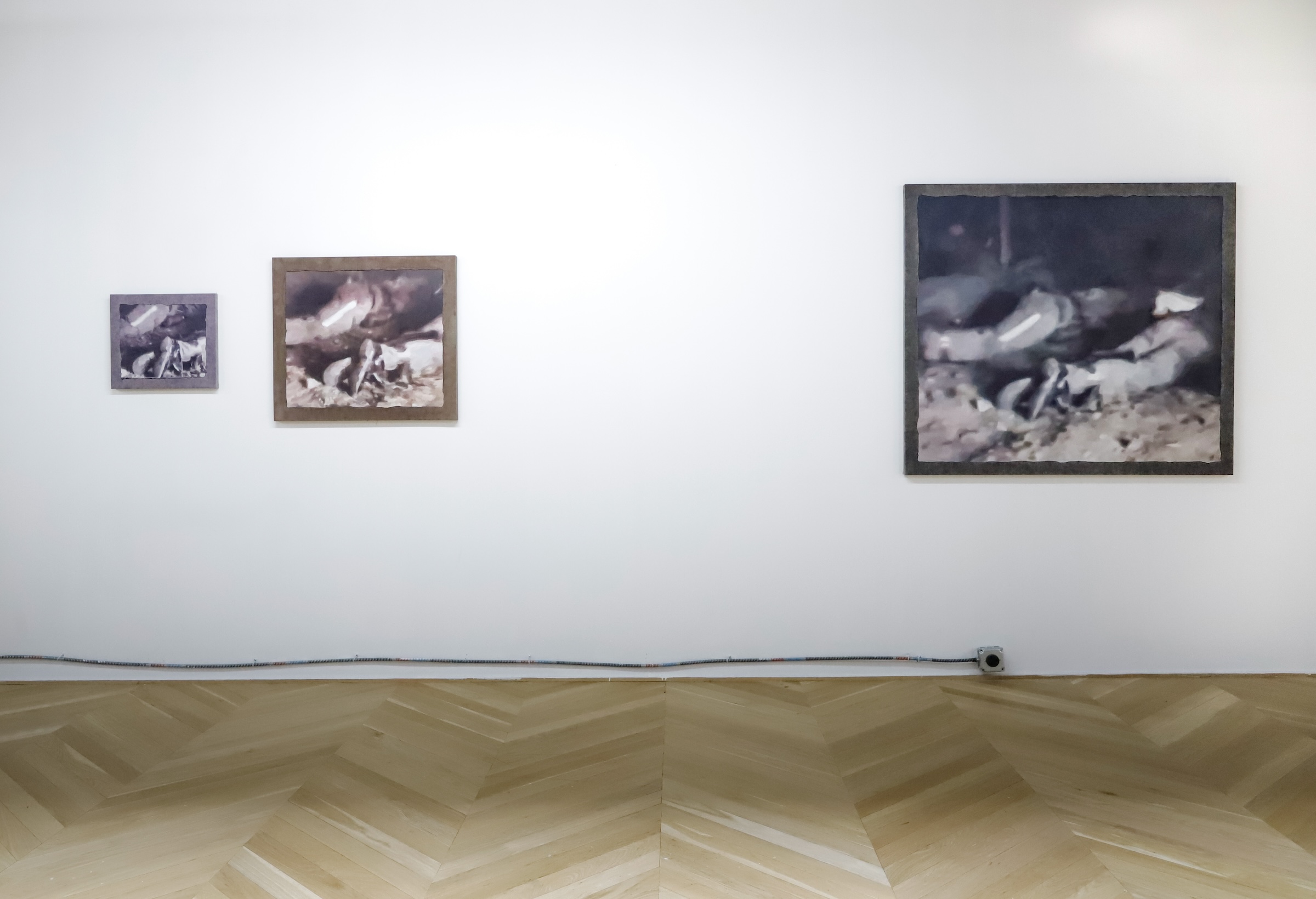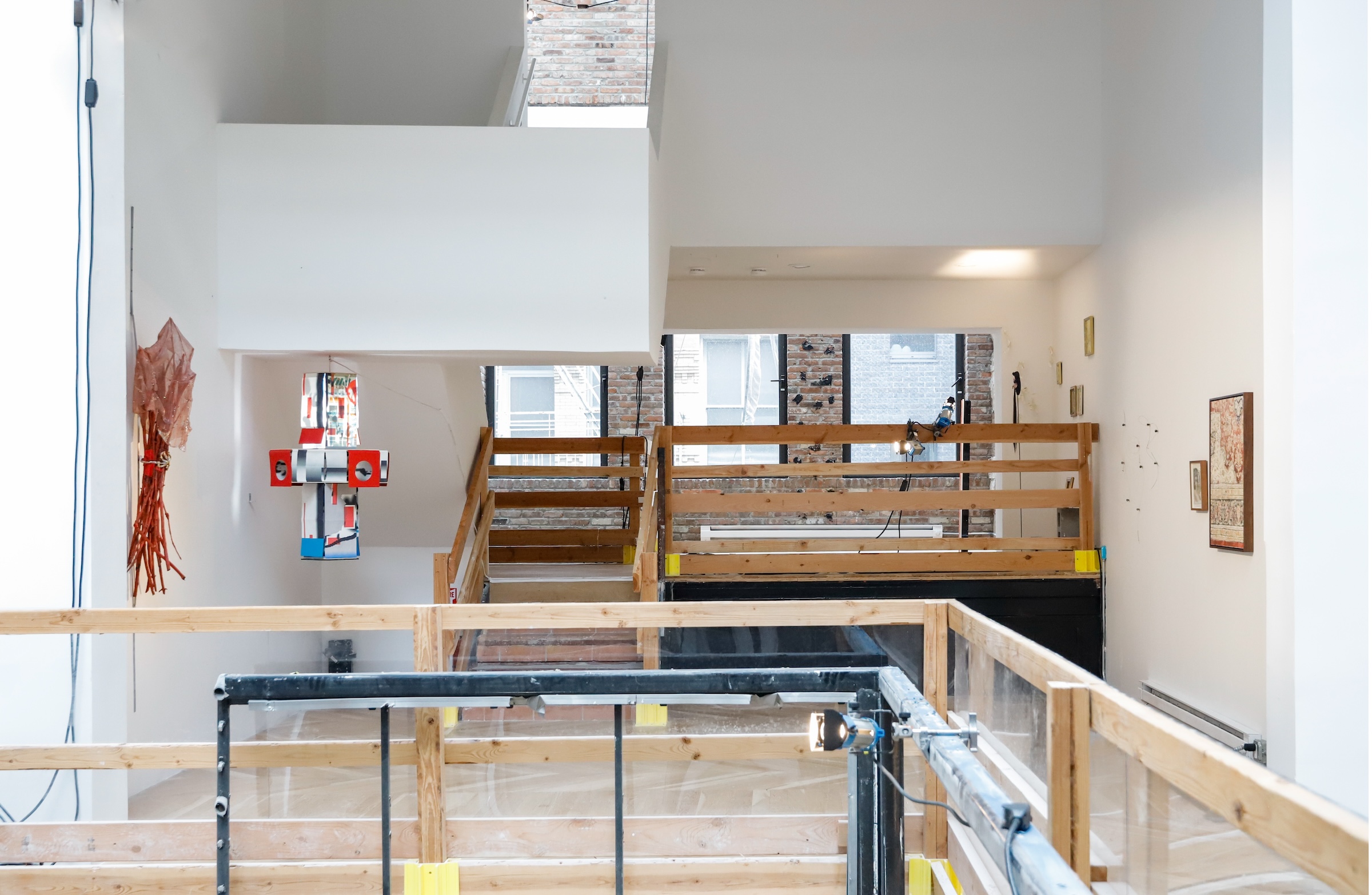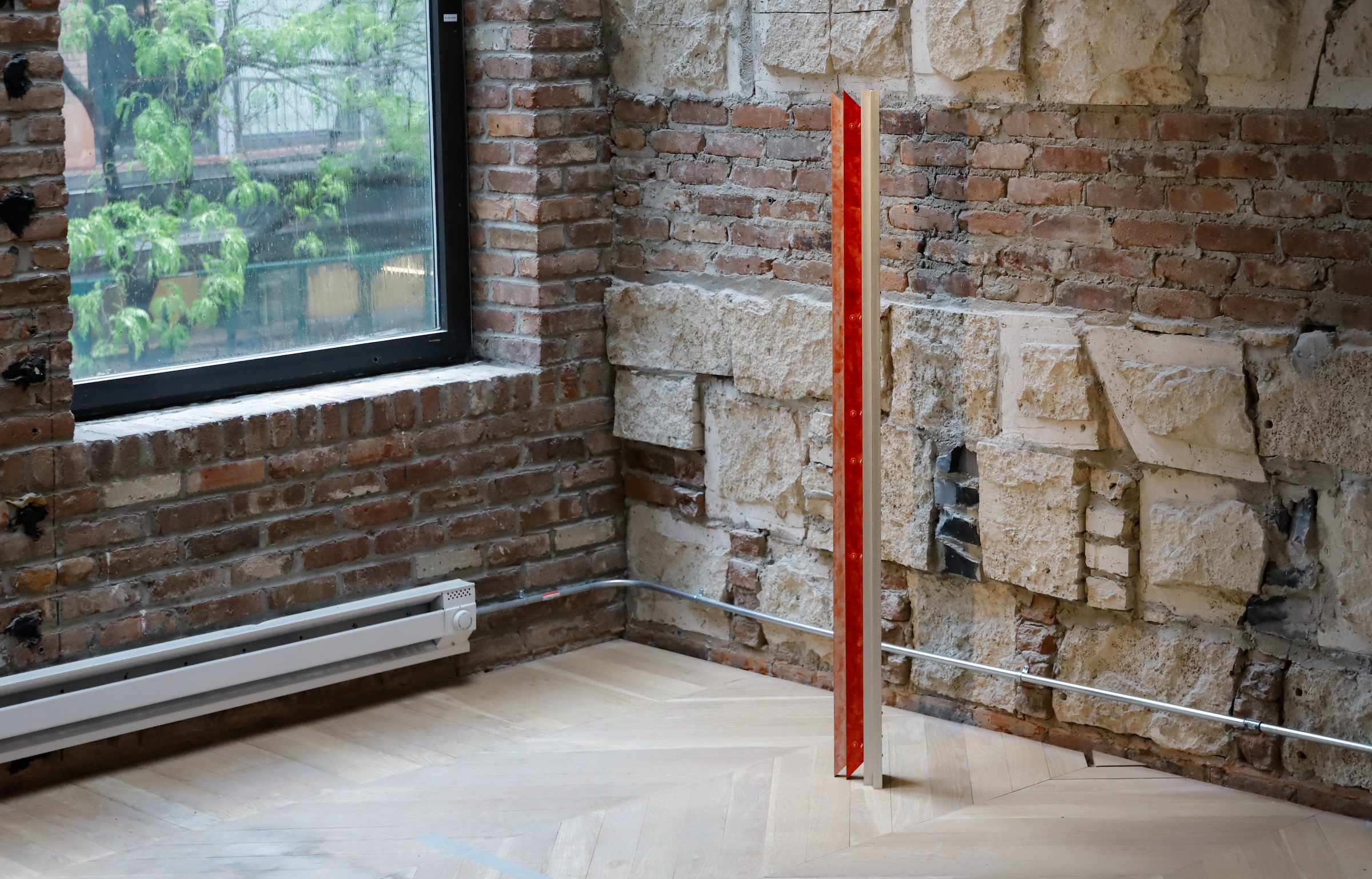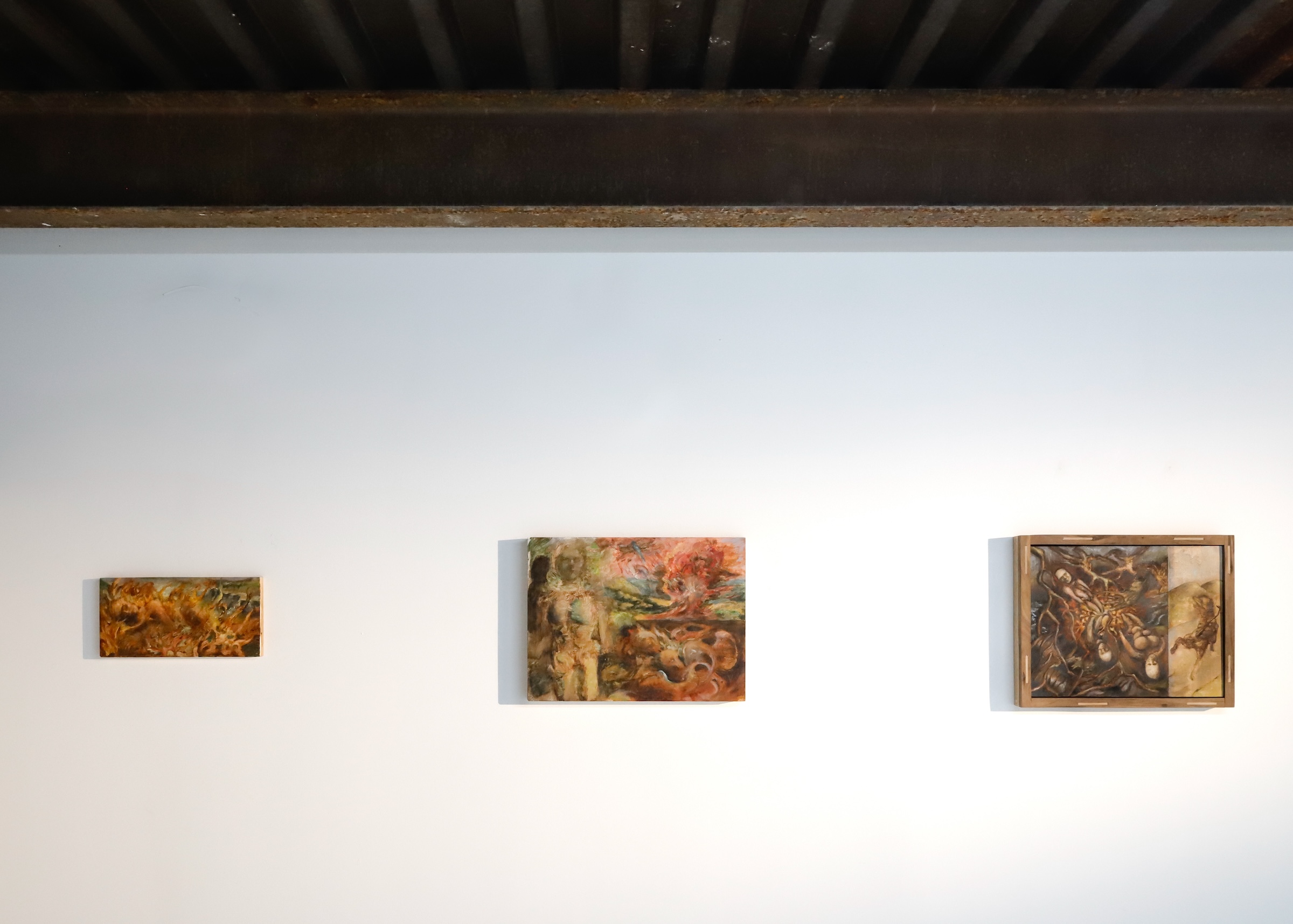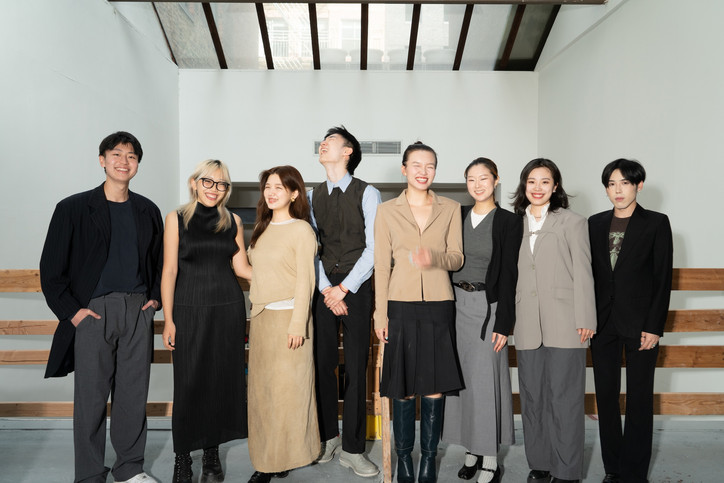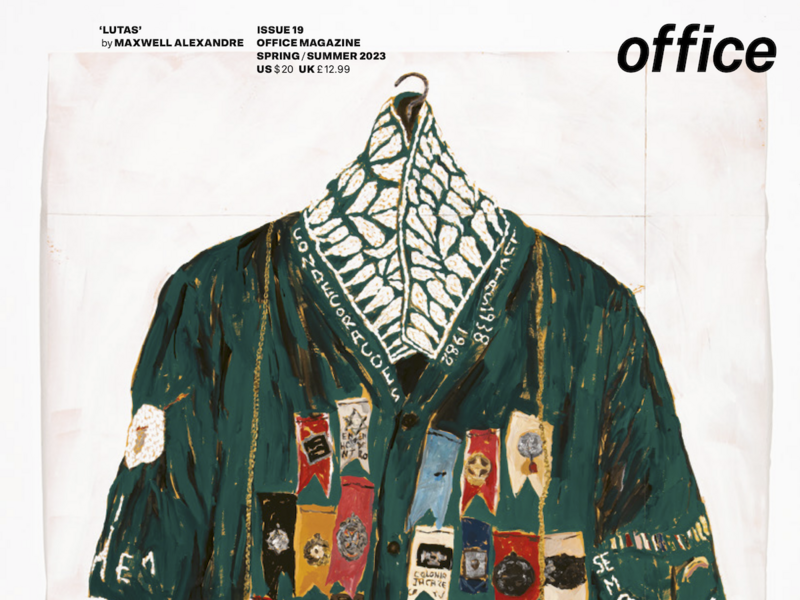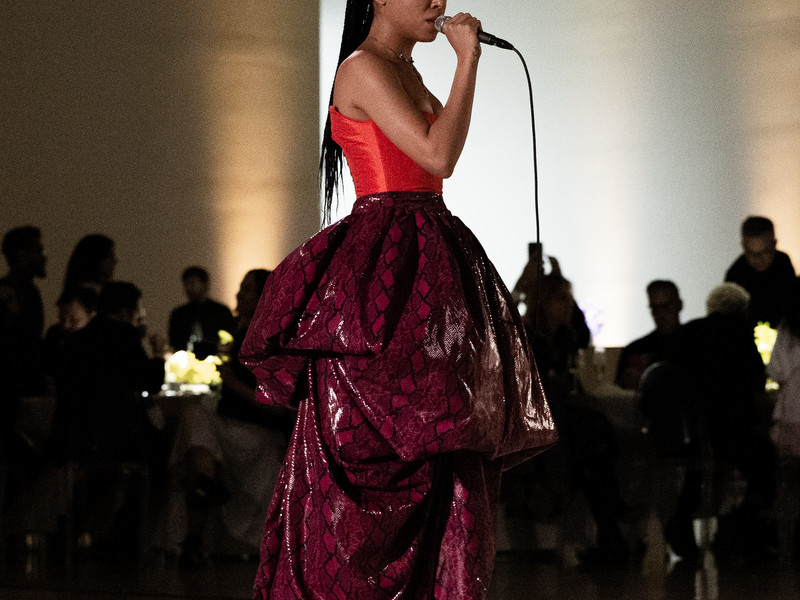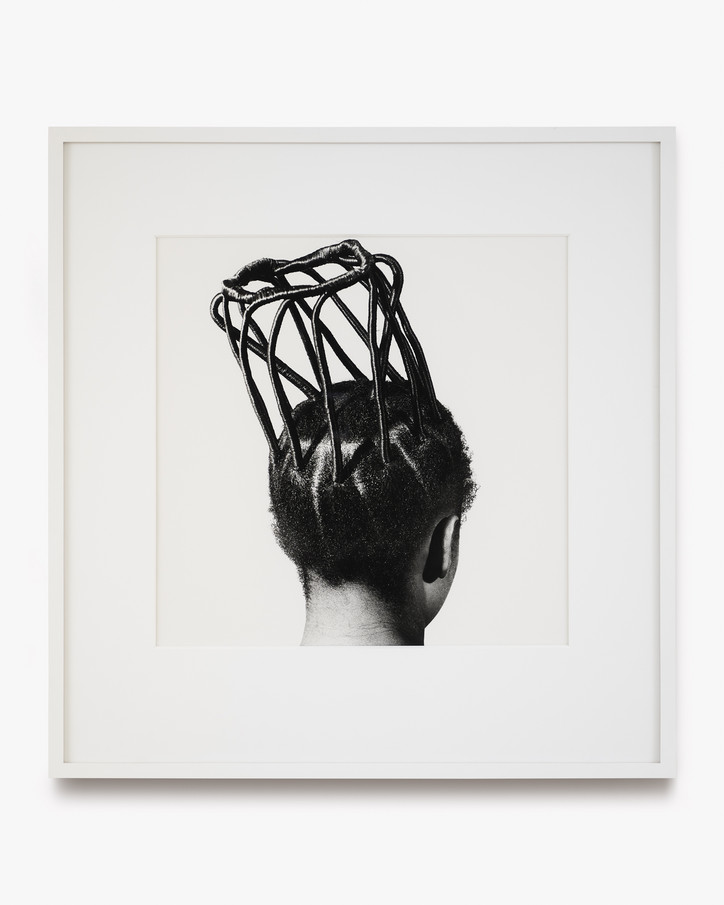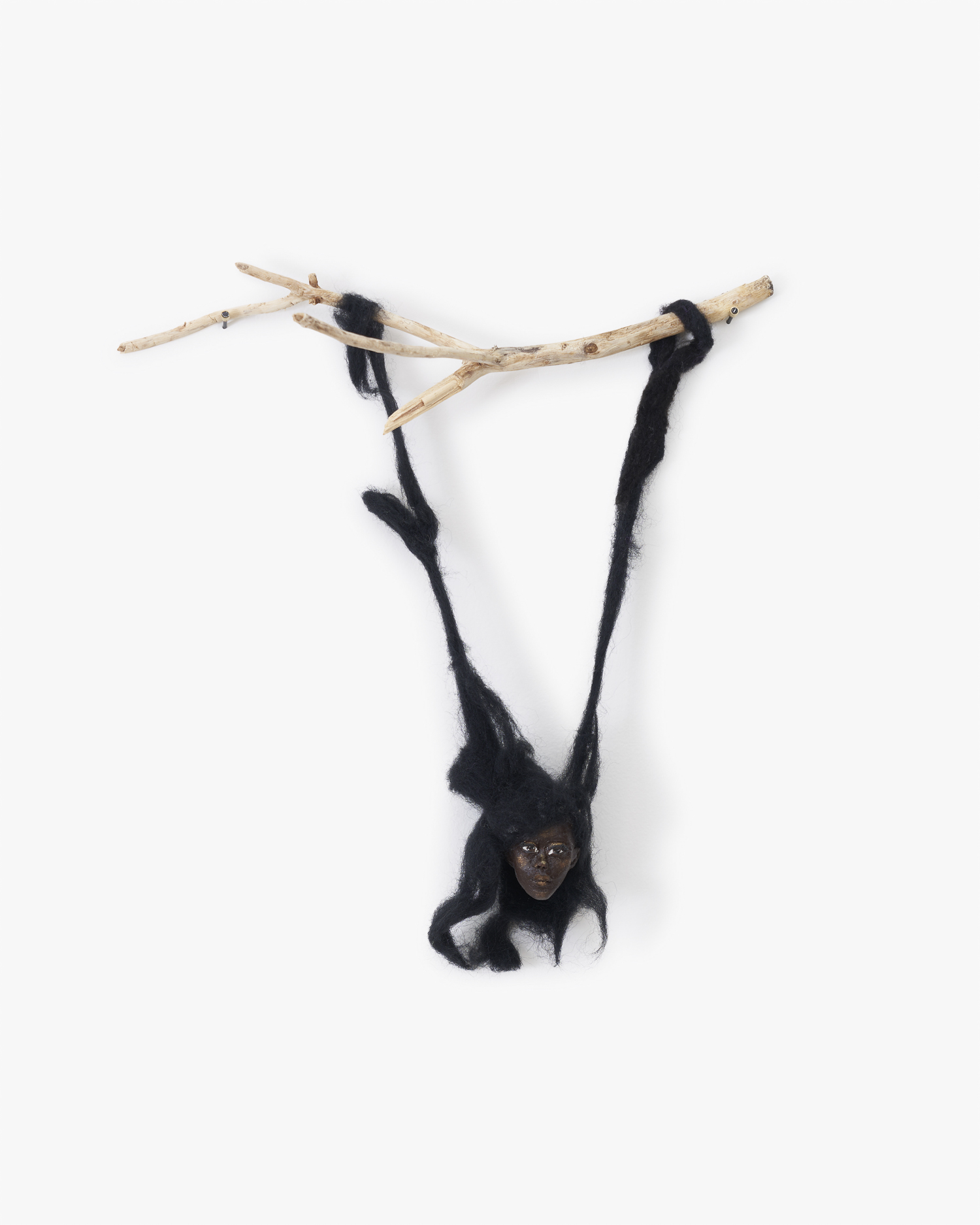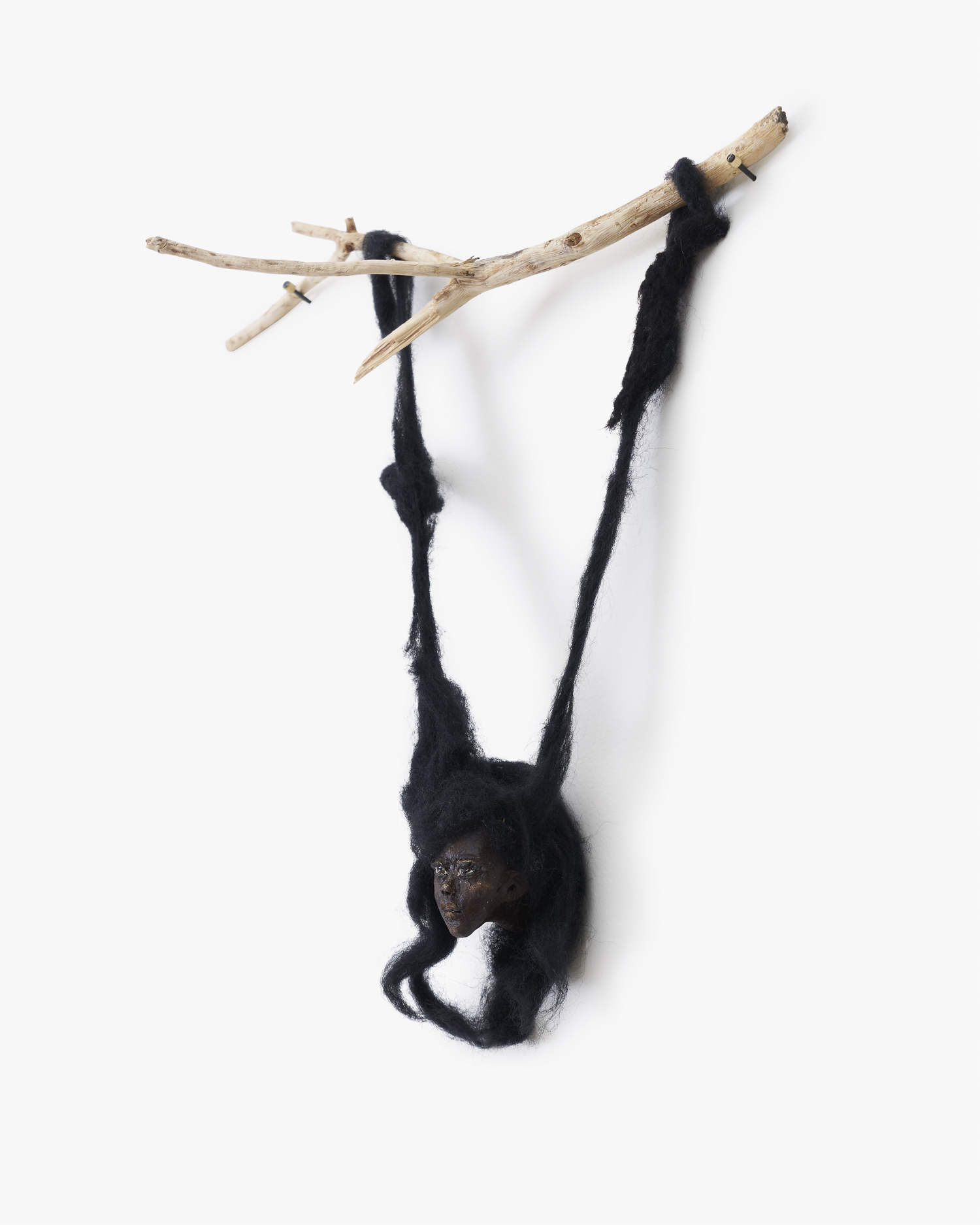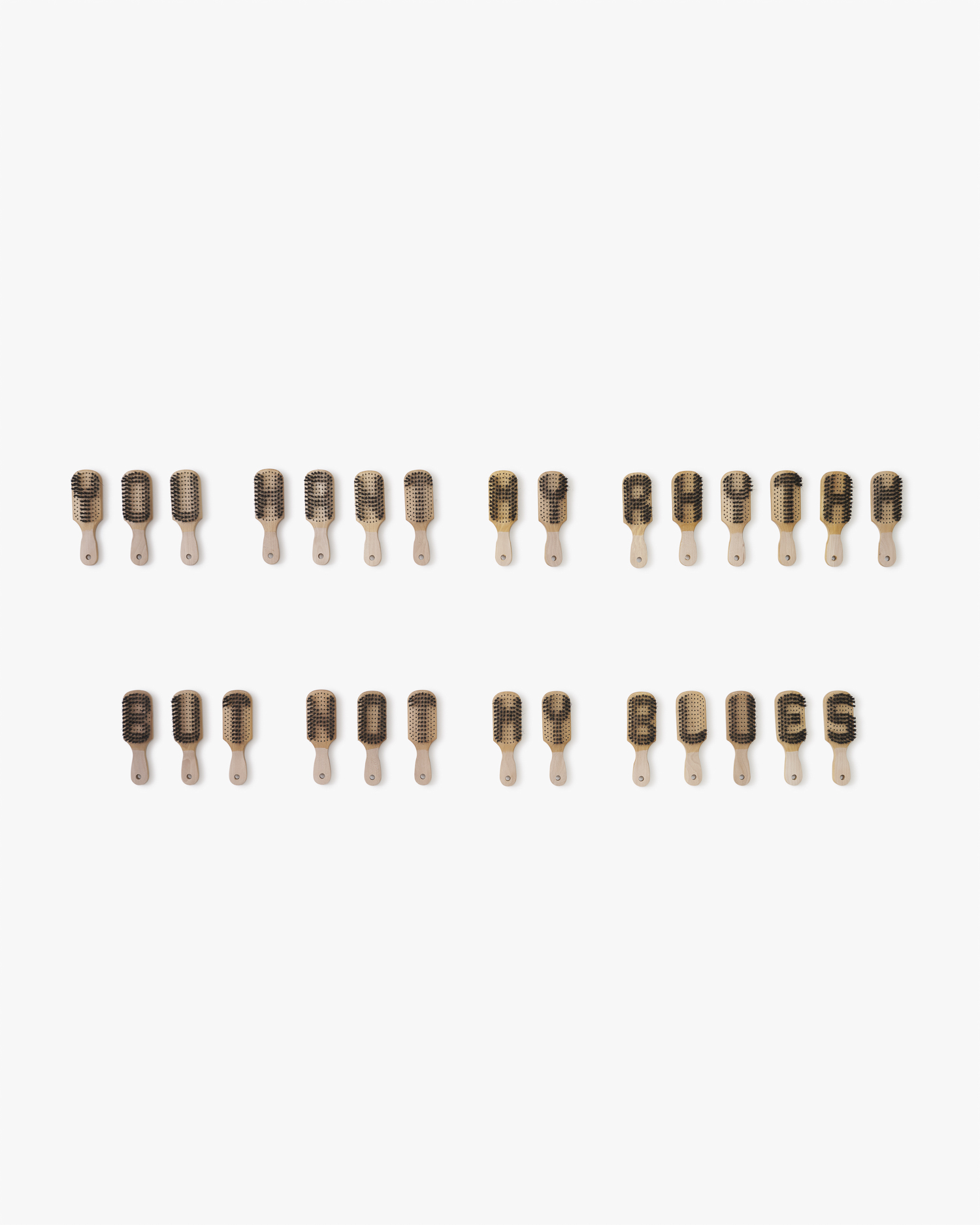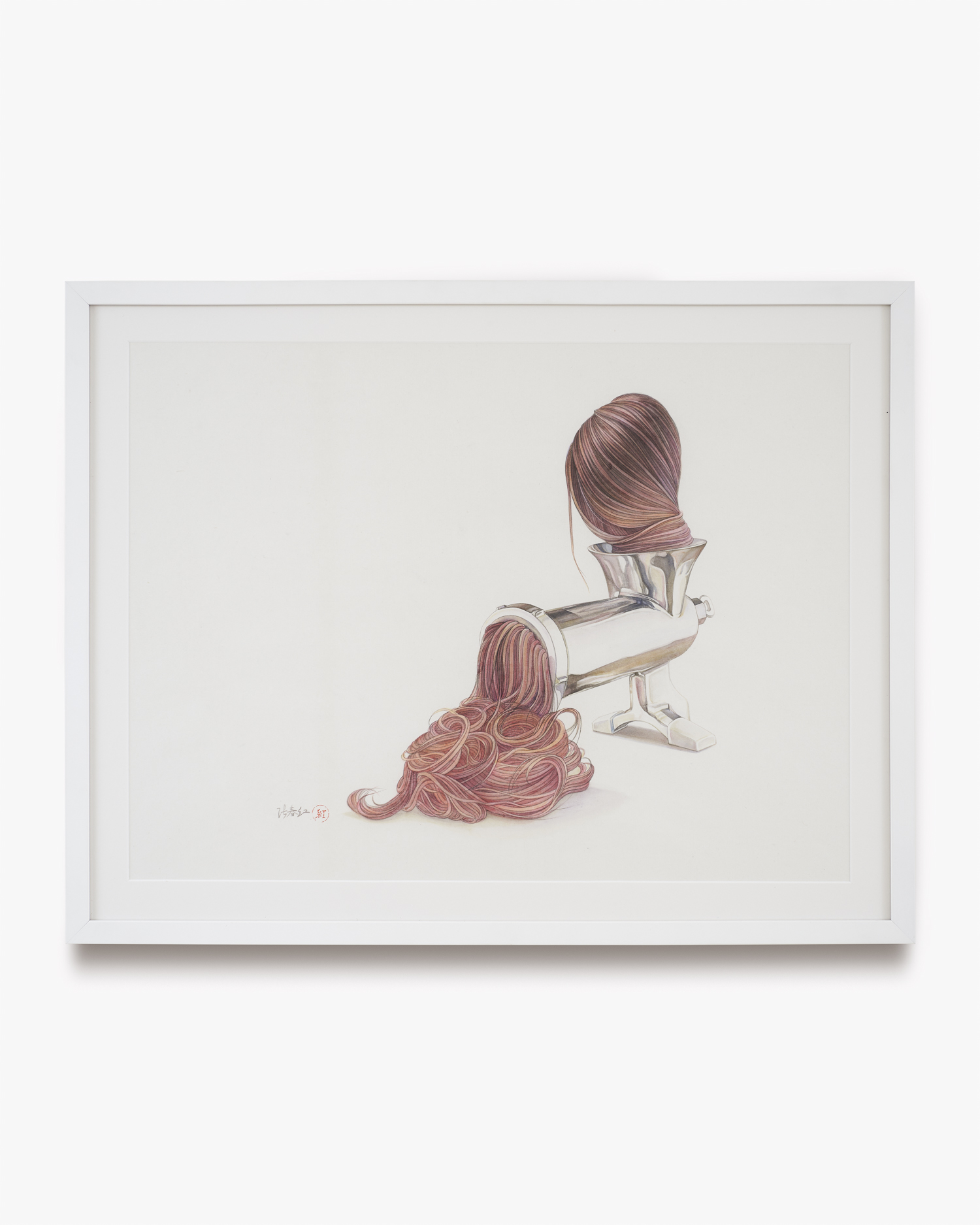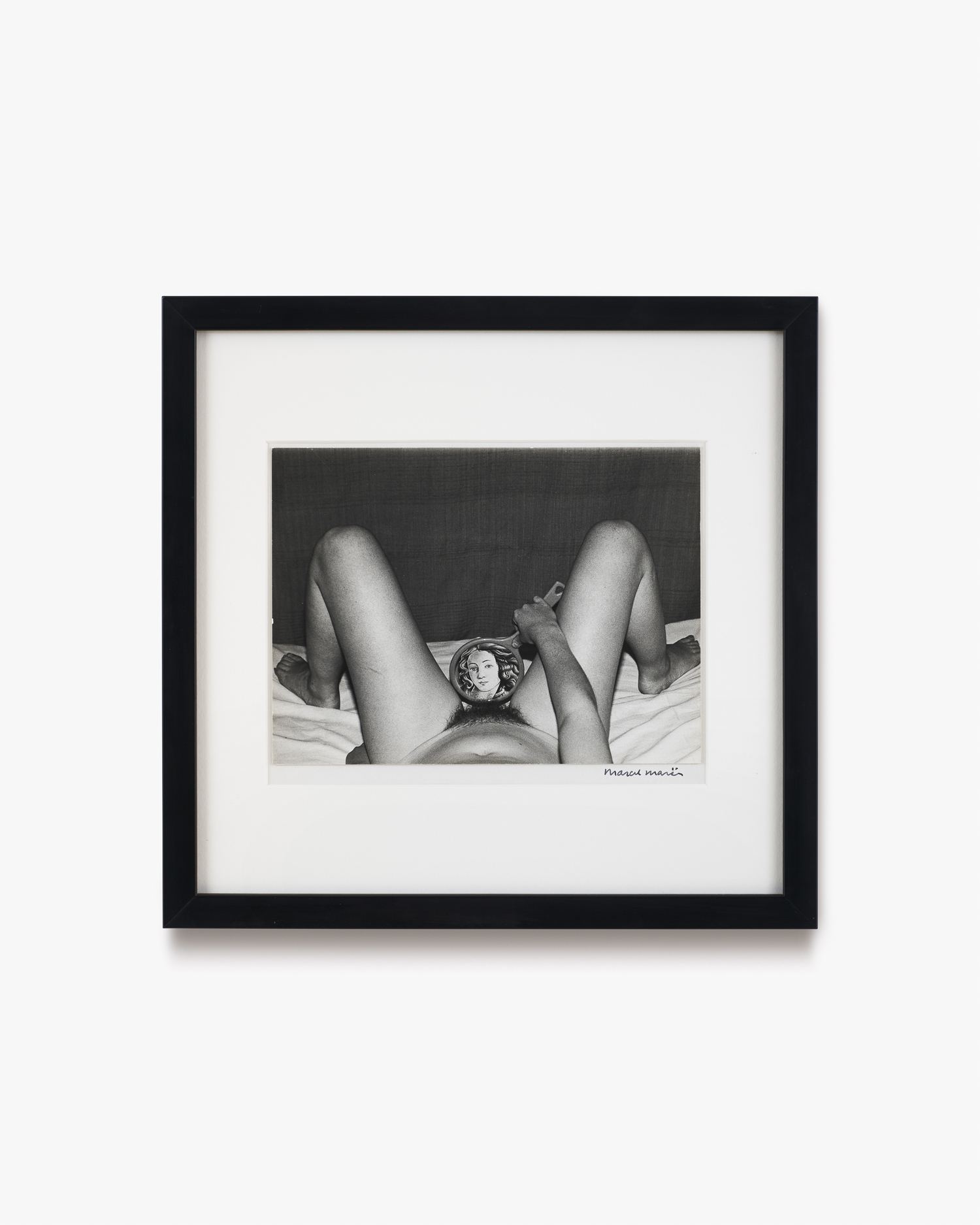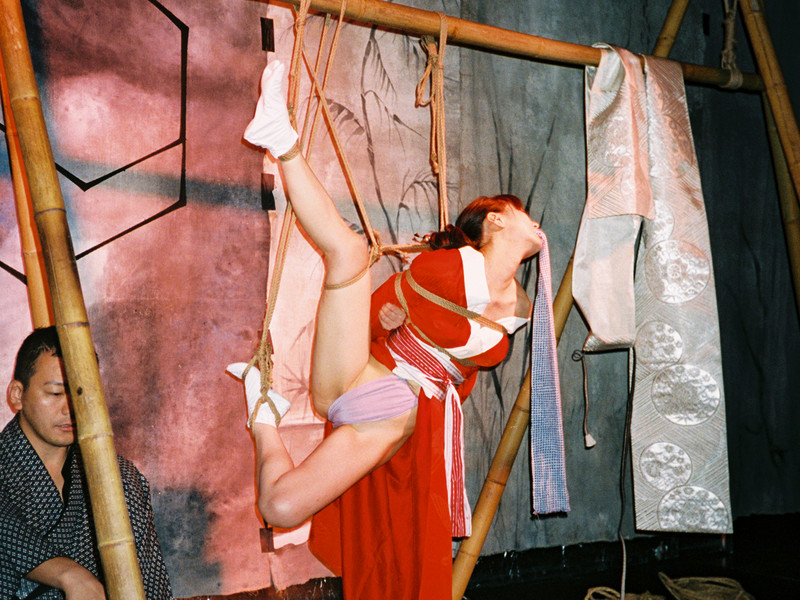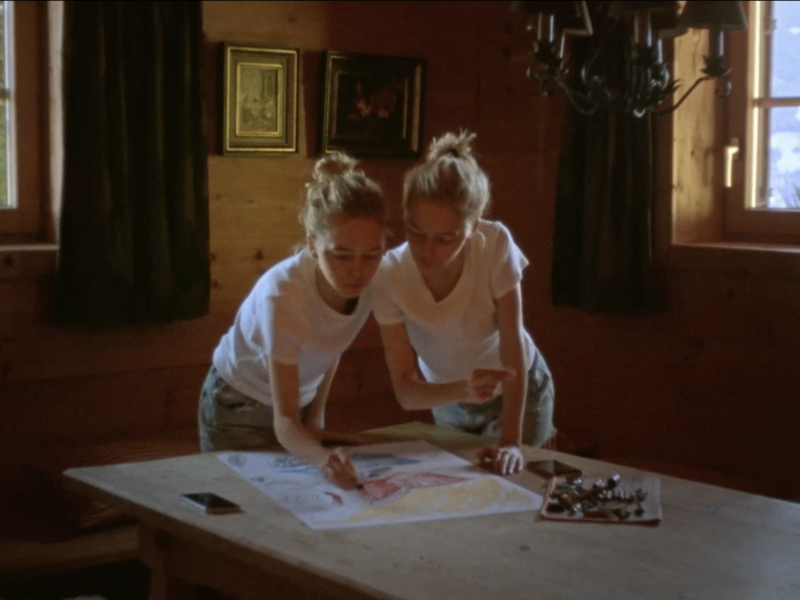The Magnet
Tell me about your work and the show at the museum.
Well, you want to know the whole deal? I’ve been photographing for I guess 63 years, I’m 77 years old, I started when I was a kid. I’m a leftist who was a revolutionary at one point, in a minor kind of way but as a photographer, and I’ve been trying to contribute pictures that matter about things that are, translated in a very singular way by me, to the culture at large. There’s a book out called The Beats, do you know it?
Like the Beat poets?
Well my guys weren’t the Karouacs and the Ginsbergs, they’re sort of the second generation of that, and I was more or less one of them. I took a trip with all these cronies, it was thirteen people in two cars across the country into Mexico etc., and the book is called The Beats, by Powerhouse Press—when I was seventeen I was photographing this and they’re beautiful, I was surprised at how gifted I was at such an early age. So anyhow, after that I came back into town and started teaching, I’ve been teaching now for fifty-five years. I’ve been grappling with subject matter that crosses the ethnographic, cultural board with some degree of peril—in other words, I get along with everybody and I’m interested in everything, I’m not an artist like beautiful Peter Hujar, who essentially limits their work and themselves within a certain Bohemia. My stuff is as broad as America. Here I am tooting this huge fucking horn, honk! honk! “My stuff is as broad as America,” honk! honk!
At any rate, the boxing work, which is what you’re concerned about, was done in the 90s, it started out as an assignment with Manhattan Inc., a magazine, to photograph Tyson and Jacobs, his manager, and it turned into a magnet which led my life by obsessive curiosity, and intimacy, in a way, for about ten years, just photographing. There is a book out by Powerhouse called Boxing, it’s a good one. And the museum is being gifted these 250 pictures of the ten-year career, and so there’s boxes of that and they went through them at the Philadelphia Museum and put them on the wall and it’s beautiful, five different rooms, beautifully hung, really smart. Peter Barbarie was the curator, a really gifted curator, and a very interesting and nice person.
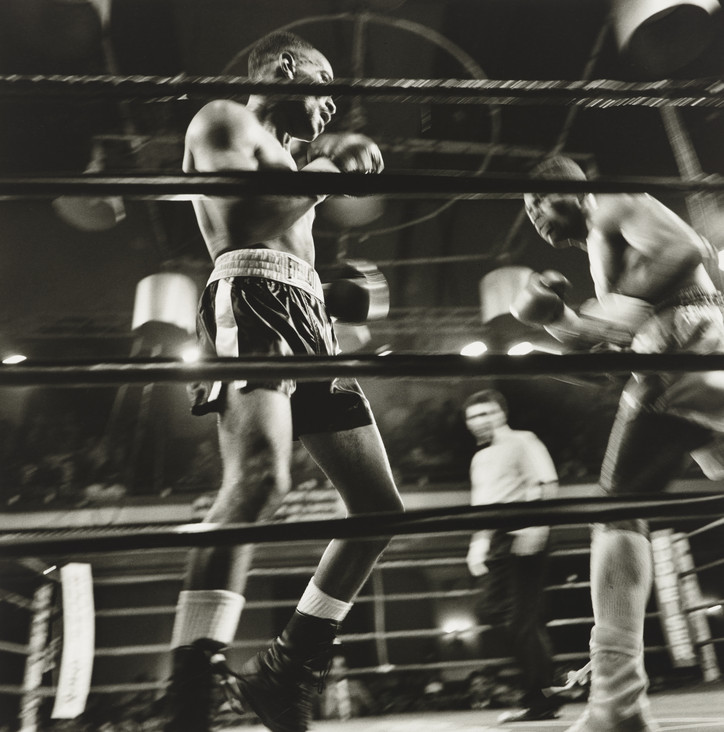
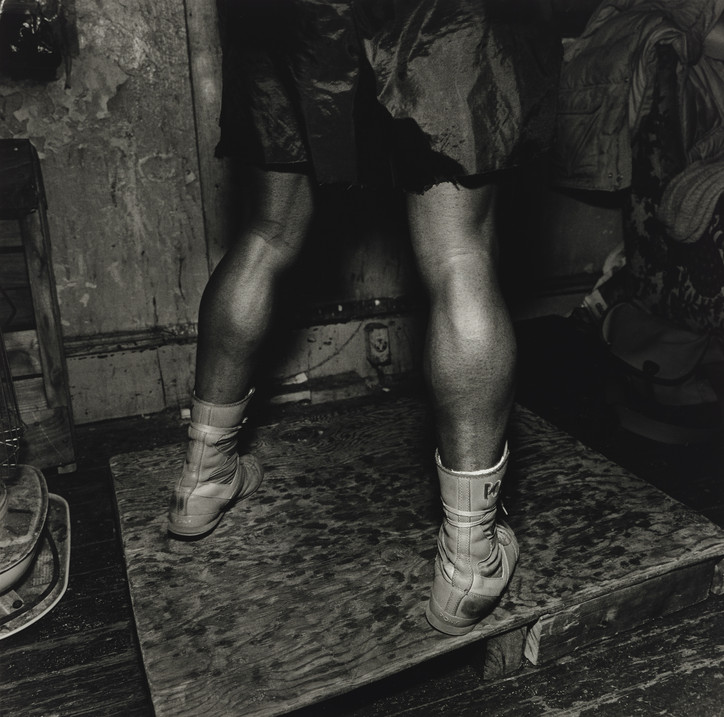
- Above left: Blue Horizon, Philadelphia, Pennsylvania, January 1992, by Larry Fink (Promised gift of the Tony Podesta Collection, Washington DC) © Larry Fink; Above right: Champs Gym, Philadelphia, Pennsylvania, January 1993, by Larry Fink (Promised gift of the Tony Podesta Collection, Washington DC) © Larry Fink.
Have you explored other subjects, or was it mostly boxing?
Oh no, not just boxing, not at all. I have a book out called Somewhere There’s Music, it’s 50 years of pictures of jazz and folk and classical music throughout my travels with classical musicians and as a musician of harmonica and piano. So that’s a book out, it’s out of print so you can hardly find it, but I bet you could find it somewhere, I guess.
Wait, so you play the harmonica and piano?
I do! Do you play music?
Well, actually my dad plays those two exact same instruments, that’s so insane. He plays blues harmonica and blues piano —
(Fink plays a ditty on a harmonica)
Applause! Applause! Do you have harmonicas on you all the time? My dad always has them with him.
Absolutely. In your pocket, it changes your mood right there. No matter what’s happening during the day, you pull out your little instrument, your harp, and bingo you’re into another place. It’s a wonderful thing.
Do you still play music?
Oh yeah, all the time. On any given night I’ll play about two hours of harp and half an hour of piano, I like jazz, so I put on beebop and so forth and I try to gig along with it, see if I can make it happen.
Do you just play in the park or at a venue or?
Well sometimes I play at the Deerhead Inn, I’ll sit in, sometimes at Lafayette Bar — places around here, and then if I have the harp in the right key in my pocket for whoever’s playing down at the public park I’ll get in there and sit in if they let me, most of the time it’s okay. It’s a hell of a lot of fun. I’m photographing not while I’m playing, obviously, but no it’s cool. Music is fun, and musicians are fun, it’s always kind of a strange party.
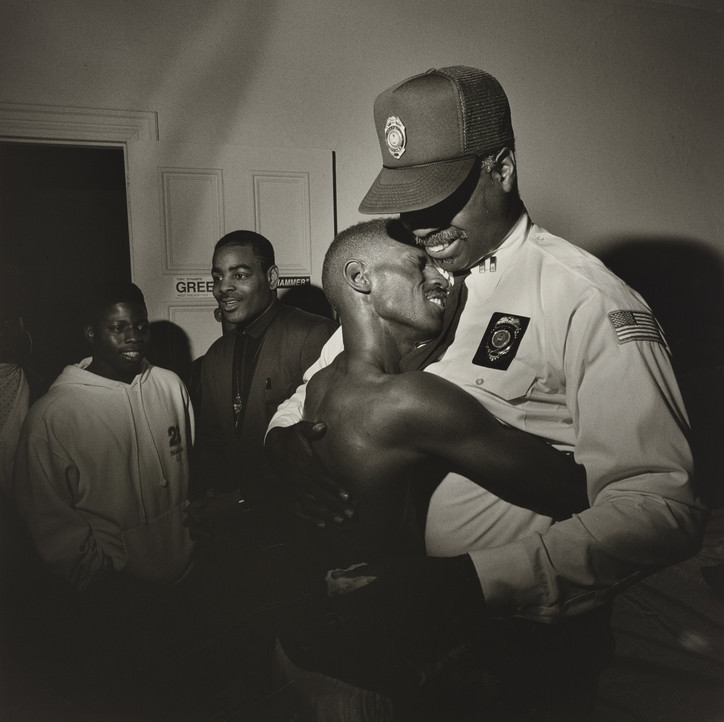
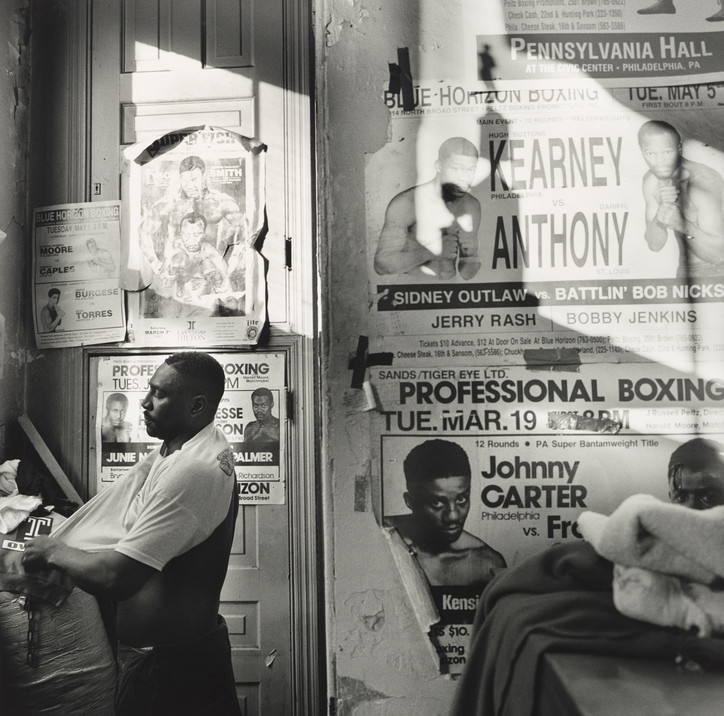
- Above left: Blue Horizon, Philadelphia, Pennsylvania, January 1991, by Larry Fink (Promised gift of the Tony Podesta Collection, Washington DC) © Larry Fink; Above right: Champs Gym, Philadelphia, Pennsylvania, 1990, by Larry Fink (Promised gift of the Tony Podesta Collection, Washington DC) © Larry Fink.
Do you feel like the two inform each other?
Music and photography? I do, absolutely. Playing jazz and blues—so much of it is based on chance, and it’s sort of like the picture looks at a whole scenario, and the idea is to edit it down and objectify it, so by doing that you improvise a scenario based on your own taste, and it’s the same thing with a tune: a tune gives you a bar, you know, four or five bars of this and that, you play it and work it, and you work around it so you can see how much you can get from it. Both of those things are based on stream-of-consciousness, in a way, pre-culturation, who knows what, and so they really they regard each other very well.
Can you hear the guinea hens in the background?
No, where are you?
I live on a farm, I’ve lived here for 50 years. I’m surrounded by dogs and peacocks and goats and guinea hens and whatever else. The place is not manicured, mind you, but it’s in good order. The flowers are not in neat little packets like so many folks do, they’re all over the fuckin’ place in different variations. The bottom of our barn is my archive where I have three or four assistants at all times working on production and working on archive, and so on and so forth. It’s gotten to a point that I’m kind of a legendary character, there’s a lot of things that are in demand, actually I’m on the road for the next month and a half. Between south San Francisco, Cleveland, Kentucky, then Paris.
All for photography?
All for photography. Then back to Bologna, where I’ve been involved in a project photographing the aristocracy. This is all new work. I’m as old as the hills but I’m still rolling.
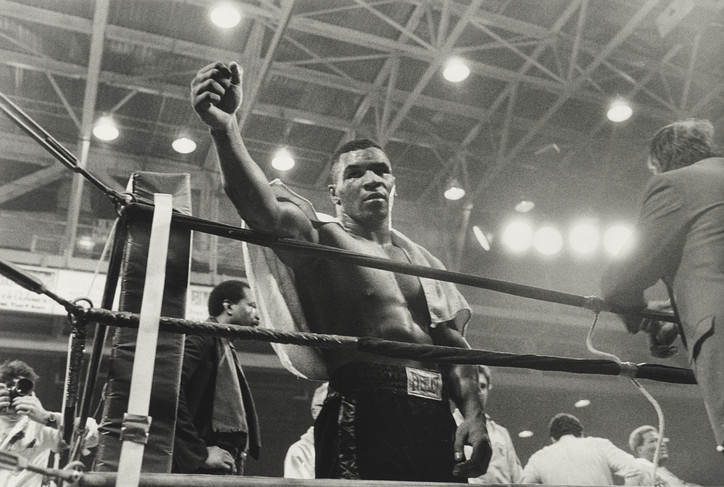
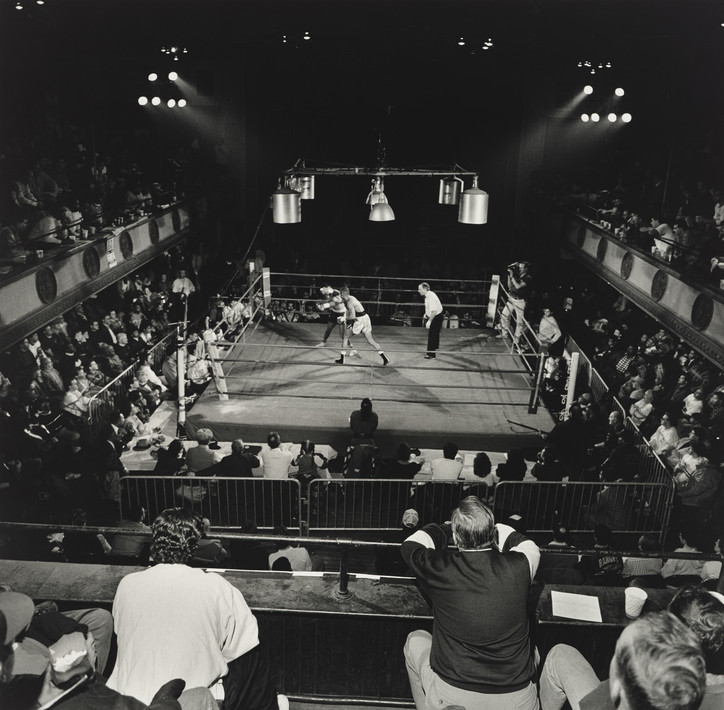
- Above left: Mike Tyson and Jimmy Jacobs, New Paltz, New York, February 1986, by Larry Fink (Promised gift of the Tony Podesta Collection, Washington DC) © Larry Fink; Above right: Blue Horizon, Philadelphia, Pennsylvania, January 1990, by Larry Fink (Promised gift of the Tony Podesta Collection, Washington DC) © Larry Fink.
I’m trying to think of a good question related to the boxing photographs—they really are interesting to look at and think about you being there. What do you think they communicate that’s special?
Well, in a nutshell, I’m a sensualist and physicalist. And I’m an empathist. So, it was my gift and sometimes terror that I have a sensitivity or acuity that enters people very, very clearly and deeply and also enters the space and everything around them, and also whatever else I’ve seen from culture, from paintings to photography to music, all of those things flood into the instant, not necessarily intellectually, in the sense of our mind being clouded with thought and words, but just the way things are. Everything that you know comes into each moment, and in photography, of course, that benefits you.
When I’m photographing boxing, it wasn’t so much the boxers in the ring that was interesting, but it was more the triumph, the innocence, the corruption and the greed, the physicality, obviously, the time where the ethnographic sensibilities of the people with their particular aspirations, that was what I was interested in, and it held me for about ten years like a magnet, this kind of theatre which it becomes after a while, and it is actually in its inception, because it’s about people who want to exhibit themselves in all kinds of ways, and power in all kinds of ways is very dominant. This was very interesting to me.
So you say you’re a physicalist and a sensualist. Can you expand on that?
No. I don’t need to. Sensuality is sensuality. Physicality is physicality. They marry. And I’m profoundly magnetized by those carnal—no, not carnal—human impulses. I’m trying to understand the nature of the tone of the energy that’s in front of me, call it a person.
I’m sorry, I missed something before that I want to return to—did you say you were working with aristocracy?
Yeah, I spent a month or two in Bologna photographing the Bolognese aristocracy. I’ve spent two months, but I’m going to go back three or four or five more times. It’s very interesting, the consequences of being an aristocrat, both absolutely poor, but still class, and absolutely rich and very much class, and the lines that are drawn, and the lines that are open, but one thing that has to be known: is that when you’re born to rule, you don’t know how to earn.
Do they still have a functioning aristocracy?
No. They have only the echo of it. One fellow I know holds up the class beautifully, saying the aristocracy has to be liquid otherwise it turns to dust, meaning that it needs to be flexible. Really, really interesting conversations. And they have, for the most part, the most glorious collections of art from the family, etc, all the way from the fourteenth century, these castles that they live in and what not, it’s really interesting.
Yeah, it’s interesting too right after we were talking about your interest in power with the boxing, do you feel like there’s a comparison there?
I’ve always been interested in power, the work you might know of called Social Graces, which is a fabled book of mine which came out in the 80s, which they say, to some degree, became the face of photography, and I quote—I wouldn’t say that about my own work—the academics take it that way. Also my use of light with the one-arm flash, which I was doing then, actually changed the style of lighting for many people, so I’ve done a lot of things with my skills and hard work. And also more than that, I have a really deep, entrenched curiosity about what it means to be alive.
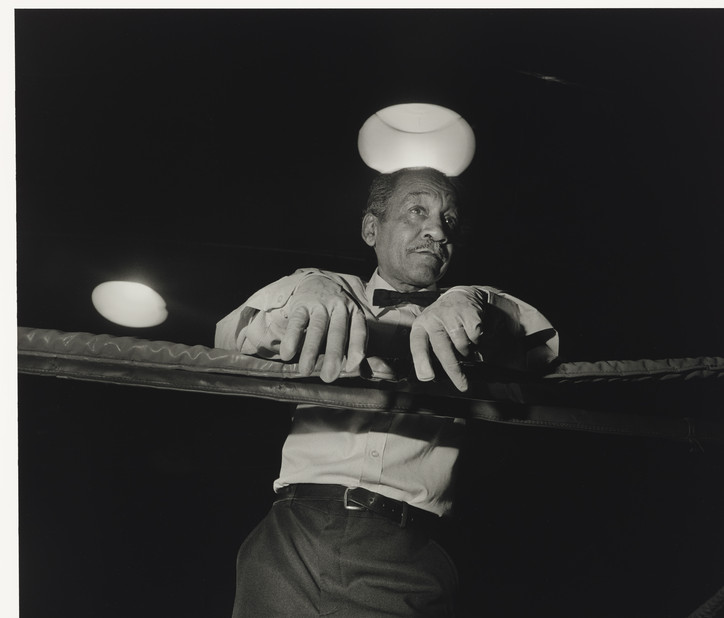
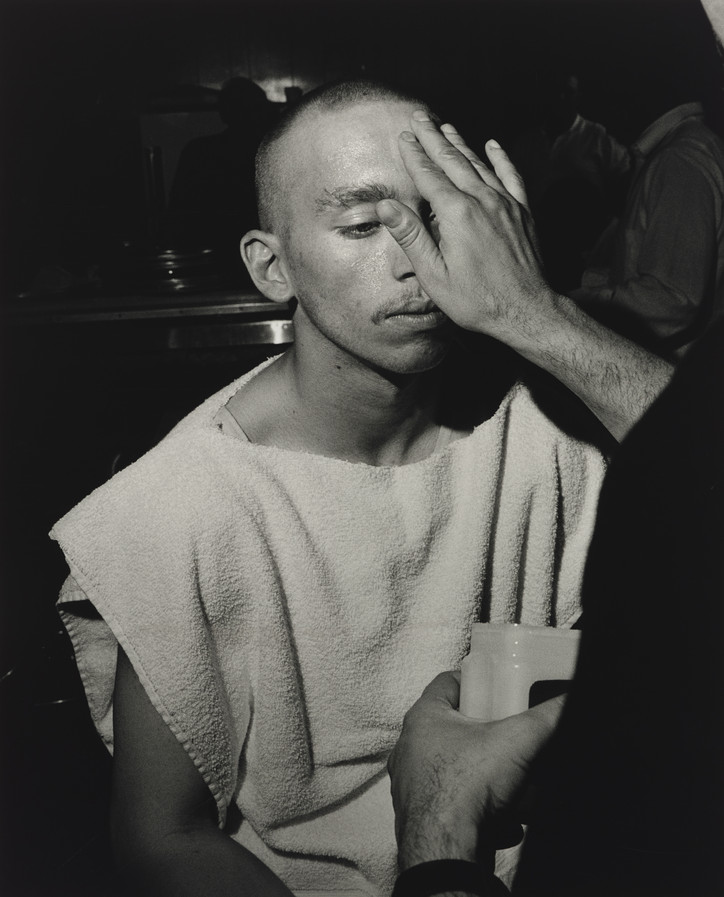
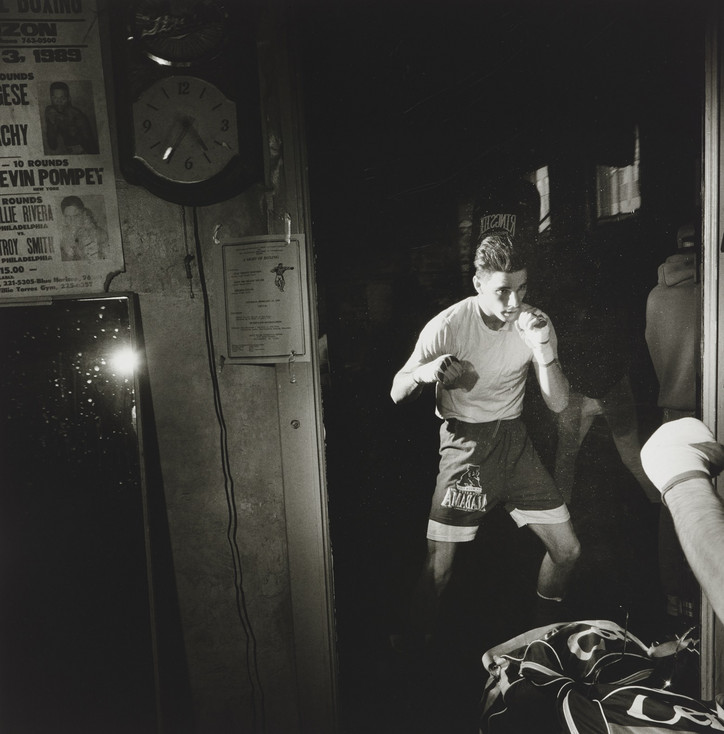
- Clockwise from above left: Blue Horizon, Philadelphia, Pennsylvania, January 1990, by Larry Fink (Promised gift of the Tony Podesta Collection, Washington DC) © Larry Fink; Castlehill, Allentown, Pennsylvania, June 1993, by Larry Fink (Promised gift of the Tony Podesta Collection, Washington DC) © Larry Fink; Champs Gym, Philadelphia, Pennsylvania, February 1993, by Larry Fink (Promised gift of the Tony Podesta Collection, Washington DC) © Larry Fink.
- Cover image: Blue Horizon, Philadelphia, Pennsylvania, January 1992, by Larry Fink (Promised gift of the Tony Podesta Collection, Washington DC) © Larry Fink.
- Larry Fink: The Boxing Photographs will be on view at the Philadelphia Museum of Art through January 1st, 2019.
For more Larry Fink-isms, check out this blogpost by John Otis at the New York Times Lens blog that Larry recommended.
